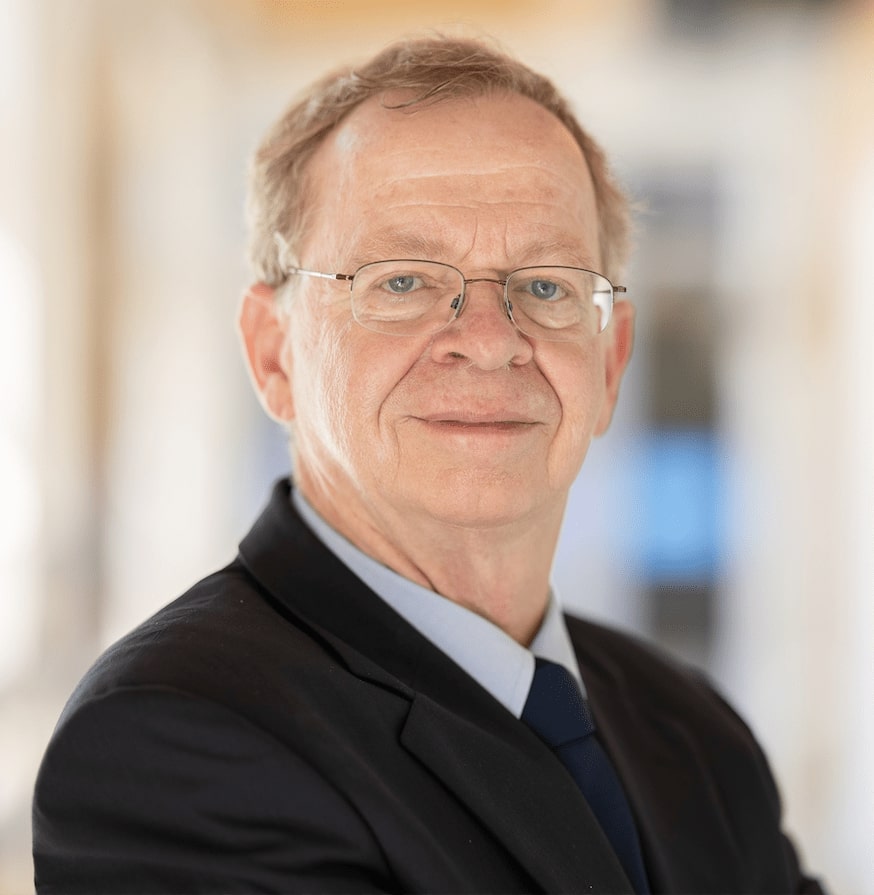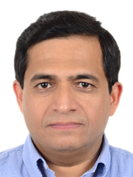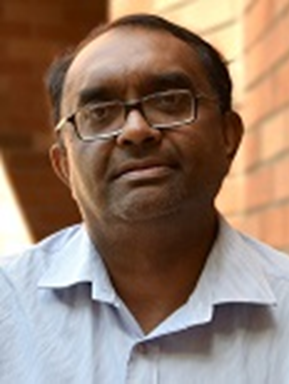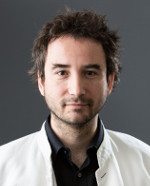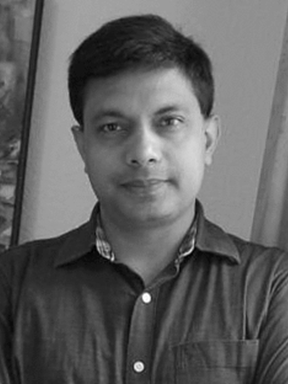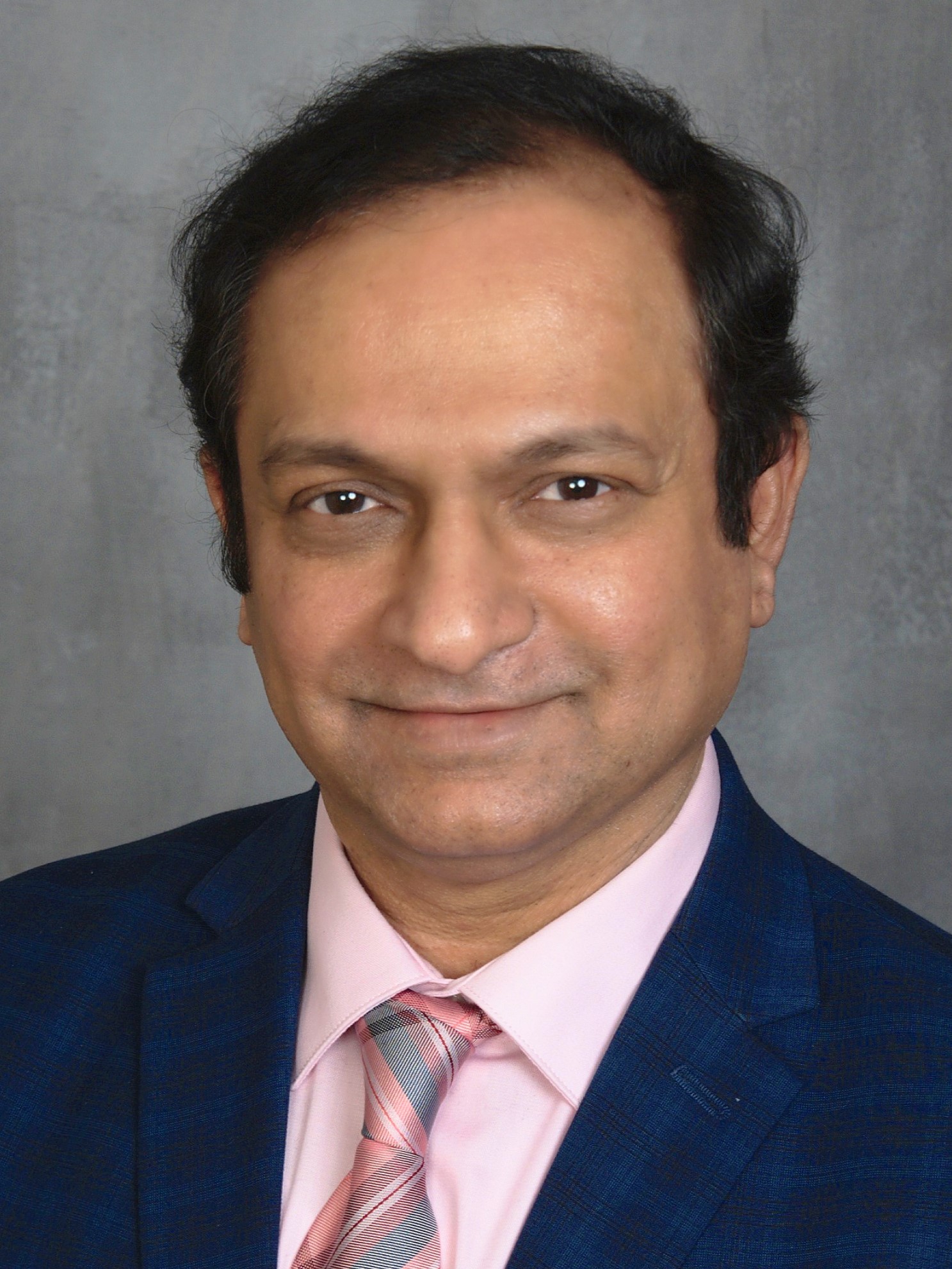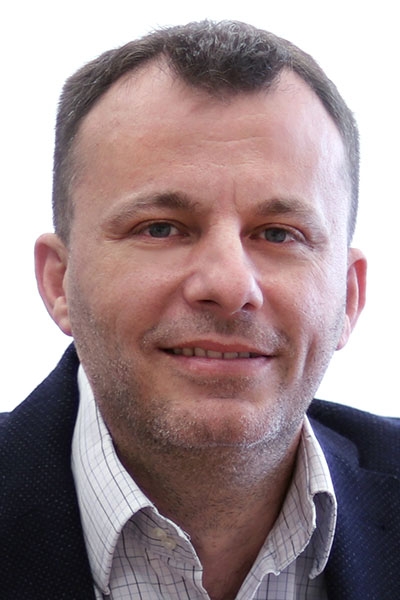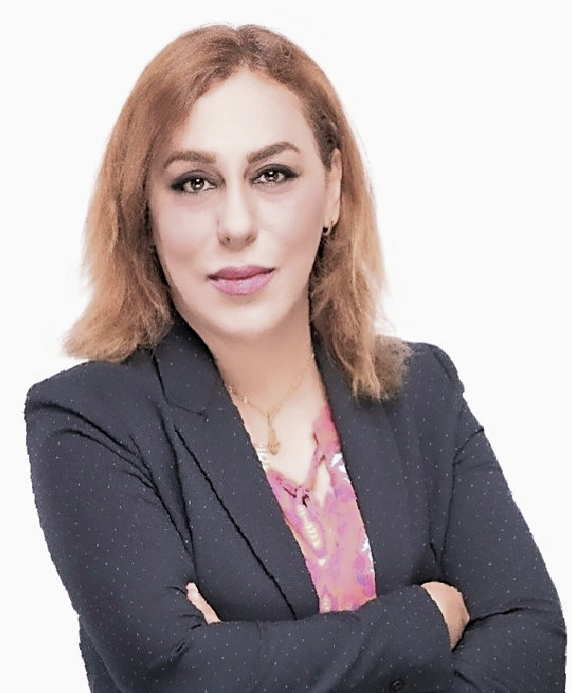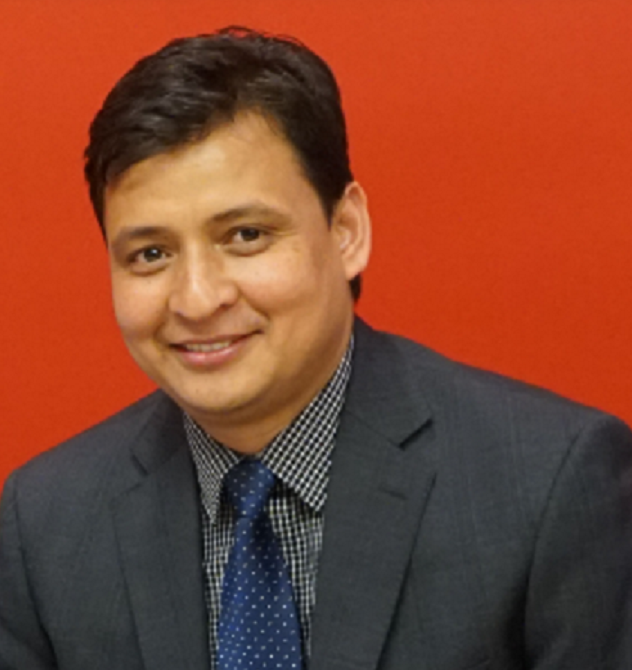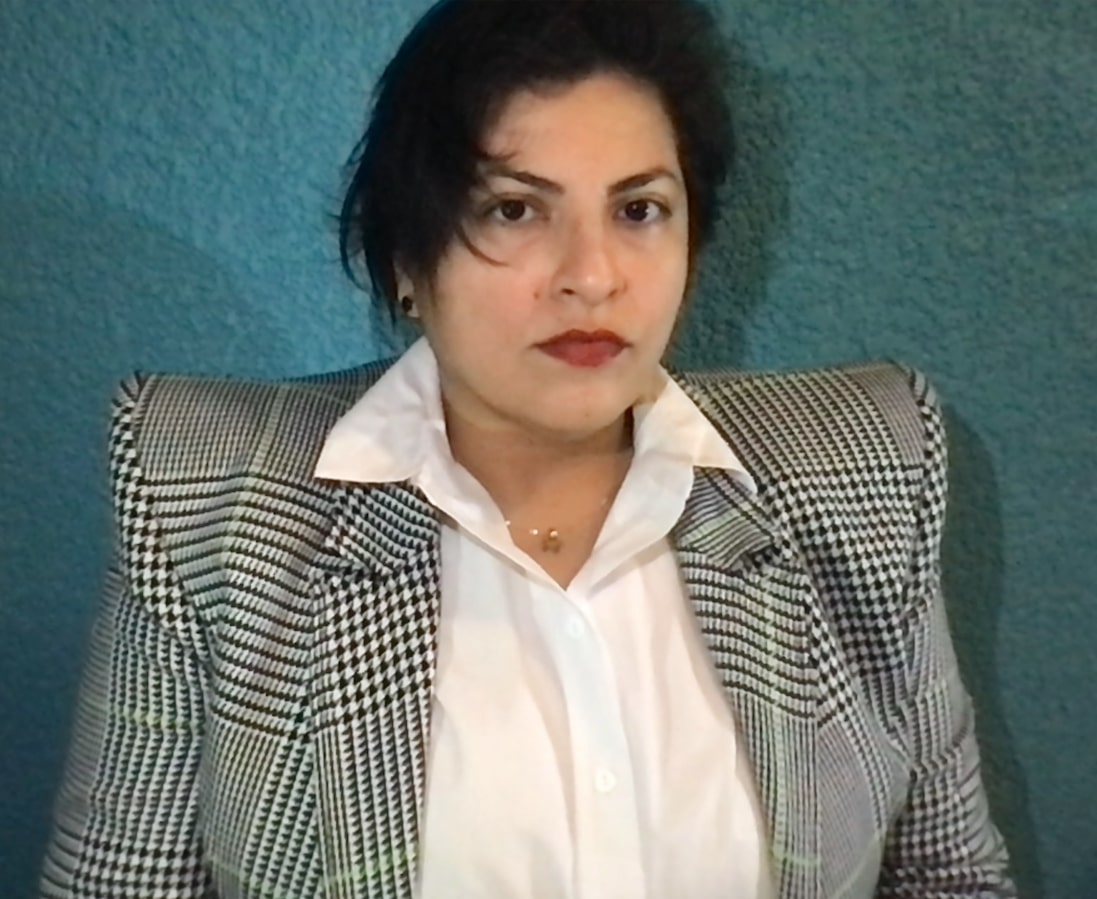Future Networks Webinars
 |
Subscribe to get alerts about future webinars |
We live in exciting times, where the pace of innovation and change is increasing rapidly and can make or break a company’s future in months. Mobility continues to be a driving force in our economy, as well as our everyday lives. 5G is expected to contribute greater than $100B to the economy within the next ten years; yet there is too little understanding of what it is, what it can do, how it will be used, and what comes next. The objective of the IEEE Future Networks Webinar Series is to expand this understanding and to be the first point of learning for all things related to 5G and beyond. These webinars will be offered around the globe to both IEEE members and non-members.
We are currently looking for knowledgeable subject matter experts to develop and deliver one or more individual webinars. Our scope includes the business of 5G, 5G enabling technologies and standards, 5G spectrum and regulation, and topics which cover the fundamentals for moving beyond 5G. Please click here to learn more.
Webinars on Demand:
Please click on the webinar image to view a detailed description and the link to the recording. Please note that registration is required to view the recording.
 |
 |
|
 |
 |
|
 |
 |
|
 |
 |
|
IEEE Future Networks Tutorial - 5G/6G 2023 Now & in the Future Edition
 IEEE Future Networks Learning Series - 5G/6G 2023 Now & in the Future Edition
IEEE Future Networks Learning Series - 5G/6G 2023 Now & in the Future Edition
21-22 September 2023 09:00 AM - 12:30 AM EDT
Virtual
Contact This email address is being protected from spambots. You need JavaScript enabled to view it.
IEEE Future Networks Technical are hosting a virtual 5G/6G Tutorial covering the state of networks today and into the future. It is part of the IEEE Future Networks Tutorial Series, a global IEEE sponsored movement in the form of one or multi-day tutorials designed to demystify 5G and beyond technologies and train technology and industry teams on upcoming future networks.
IEEE Future Networks Tutorial - 5G/6G 2023 Now & in the Future Edition will feature a number of tutorial style presentations by Wireless Networks experts from both academia and industry discussing on the way forward beyond 5G that have been selected out of many speakers since 2018 who have presented tutorials in the past. It is an excellent opportunity for researchers, practitioners, and students from both academia and industry to learn about the latest advances on some of the hottest topics in 5G; such as URLLC, Massive MIMO, Industry 4.0, V2X communication, and Machine Learning.
|
Agenda - 21 September 2023 (below times are EDT / New York) |
|
| 9:00 – 9:10 |
Welcome
Dr. Amruthur Narasimhan Ph.D., CISSP, IEEE Future Networks Education WG Tutorial Co-Chair
|
|
9:10 – 10:25 |
Introduction to 5G Applications - Now and Future David Witkowski, Oku Solutions LLC, CA, USA 60 minute video followed by 15 minute live Q&A |
|
10:25 – 11:40 |
Andrea Di Giglio, 5G-SOLUTIONS /TIM, Italy 60 minute video followed by 15 minute live Q&A |
| 11:40 – 11:50 |
Closing
Dr. Amruthur Narasimhan Ph.D., CISSP, IEEE Future Networks Education WG Tutorial Co-Chair
|
|
Agenda - 22 September 2023 (below times are EDT / New York) |
|
| 9:00 – 9:10 |
Welcome
Dr. Amruthur Narasimhan Ph.D., CISSP, IEEE Future Networks Education WG Tutorial Co-Chair
|
|
9:10 – 10:25 |
Jacopo Iannacci,Italy 60 minute video followed by 15 minute live Q&A |
|
10:25 – 12:10 |
Physical and Virtual world – Bridging the gap in 6G Krishnamurthy Raghunandan, MTA, NY, USA 90 minute video followed by 15 minute live Q&A |
| 12:10 – 12:20 |
Closing
Dr. Amruthur Narasimhan Ph.D., CISSP, IEEE Future Networks Education WG Tutorial Co-Chair
|
Organizers
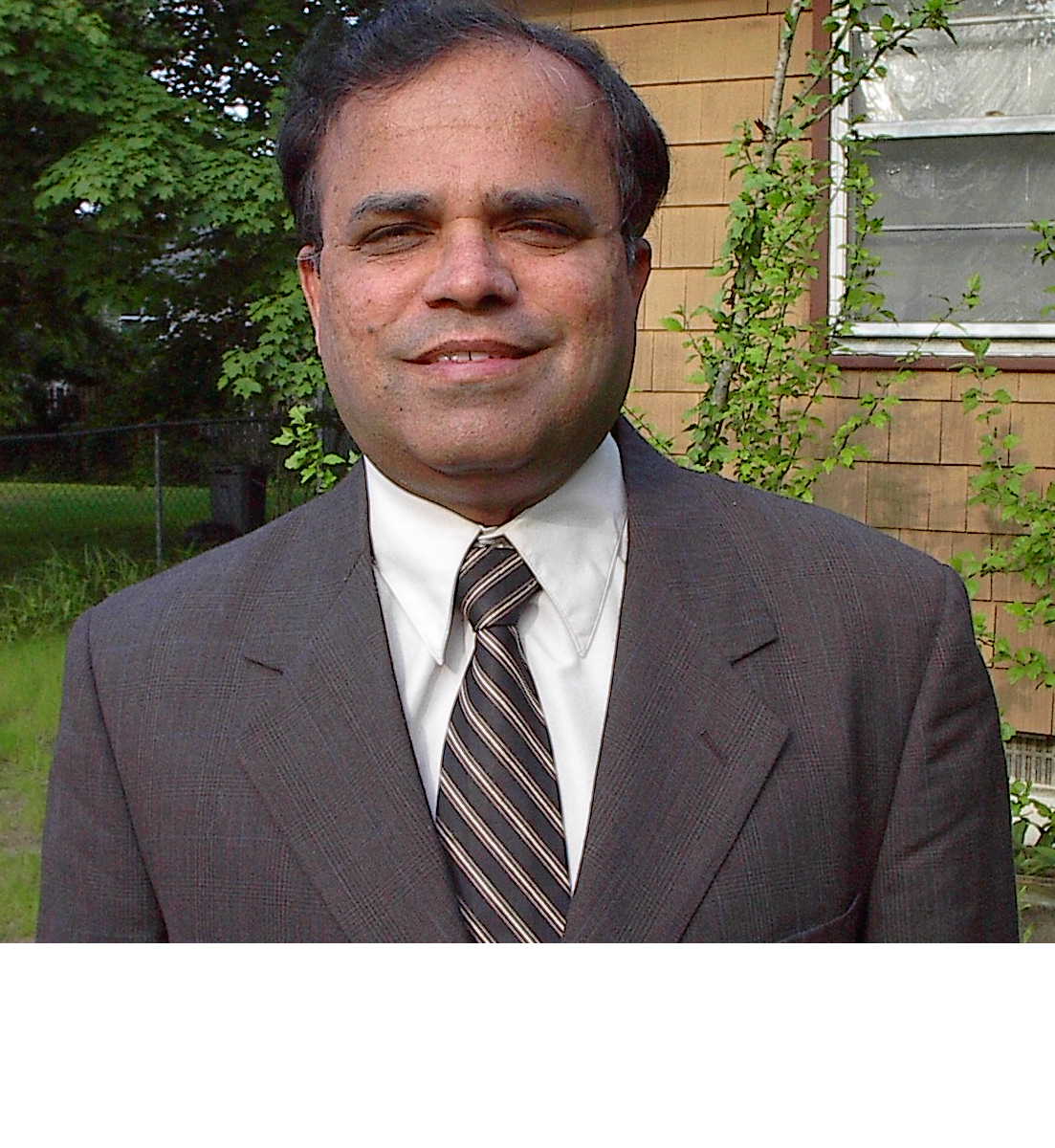 |
Dr. Amruthur Narasimhan Ph.D., CISSP (This email address is being protected from spambots. You need JavaScript enabled to view it.), IEEE Future Networks Education WG Tutorial Co-Chair Dr. Amruthur Narasimhan Ph.D., CISSP is a consultant in Information Security, Cyber Security and privacy areas. He has over 25 years of experience in System Engineering, Architecture, Technical Leadership and Management, Software Development, Communication Protocols, and Project Management. Narasimhan has professionally trained students in System Engineering, Network Architecture, Security Protocols, Communication Protocols, VOIP security and WLAN security. He has held various positions in multinational companies: Software Engineer Manager Chief at SAIC, Security Consultant at Northrop Grumman, President of Amrutek Services, Technical Manager at Avaya, Principal Technical Staff Member at AT&T, and Associate Professor in Department of Computer Science at Stevens Institute of Technology. Narasimhan was chair of the IEEE conference on Mobile Security/Cyber Security and Privacy held in 2014 and 2015. Narasimhan has received IEEE third Millennium Medal for contributions in Electronic Commerce and Multimedia Technology in May 2000. He has received IEEE Region 1 award for technical achievement in 2002 for eBusiness and Internet Technologies. He has IEEE Region 1 award for technical achievements for Innovation in Artificial Intelligence Technology in 1997. He has been coordinator and speaker for various IEEE conferences on VoIP security, WLAN security and Multimedia security. Narasimhan was chair of IEEE NJ coast section consultant’s network, chair of IEEE NJ Coast Section PACE, Chair of IEEE NJ Coast Section (1996-2002) and Chair of IEEE NJ Computer Chapter (1993-1996). Narasimhan has good communication skills being a coach for Dale Carnegie courses on Human relations. He has graduated as Competent Toast Master in Public Speaking from Toast Masters International. Narasimhan is a Certified Information Systems Security Professional (CISSP). Narasimhan possesses Ph.D. in Computer Science from Indian Institute of Science, Bangalore, India, one of the prestigious institutions in India. |
DETAILS ON PRESENTATIONS & SPEAKERS
Title: Introduction to 5G Applications - Now and Future
Abstract: 5G, the fifth generation of mobile connectivity, entered the scene in 2019 with much fanfare. Intended to be more than just a speed increase for smartphones, it promised a raft of features to serve the Internet of Things and machine-to-machine use cases. This presentation will overview the non-smartphone use cases of 5G, and discuss both the current and future states of these offerings.
Duration: 60 minutes | Category: 5G/6G applications
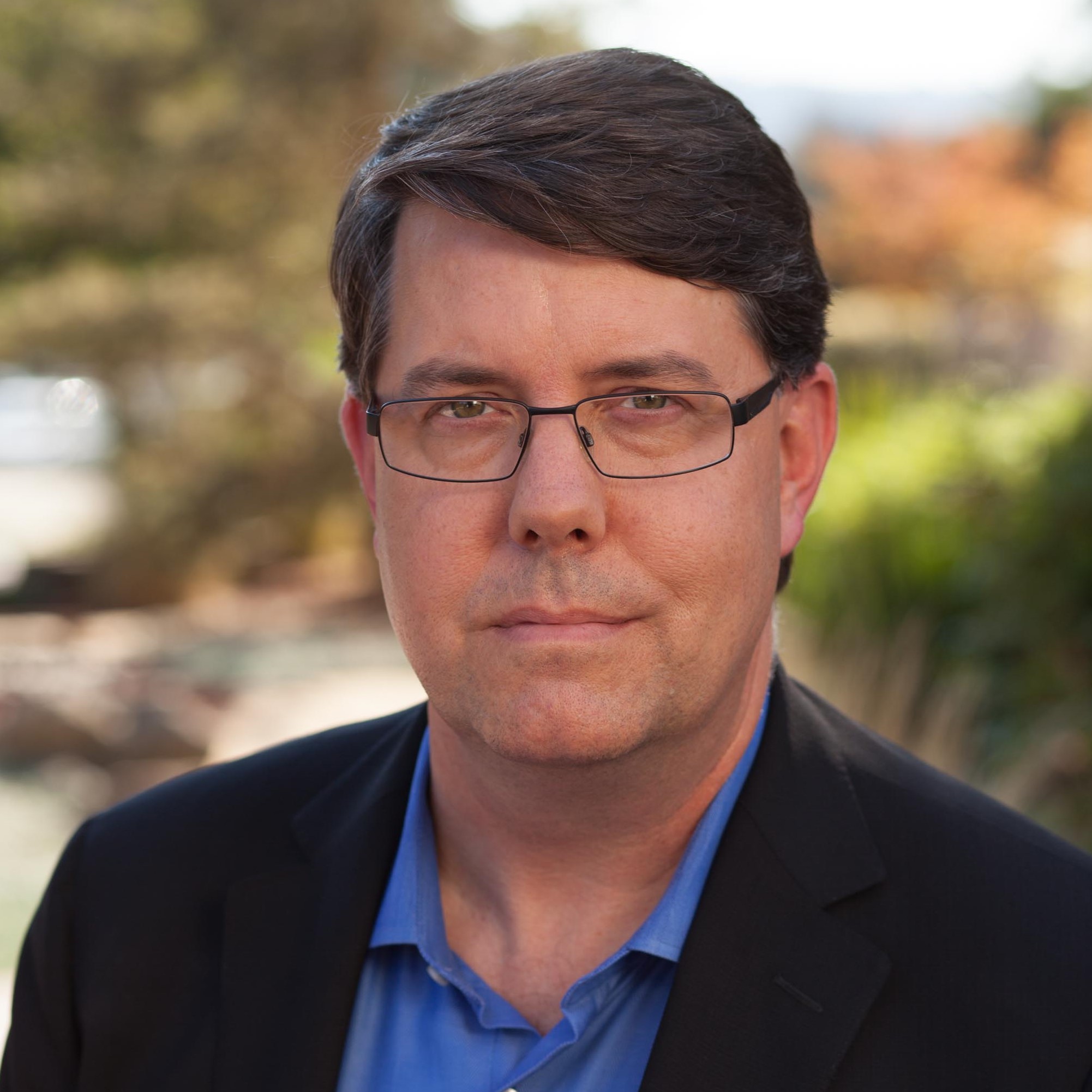 |
Speaker Bio: David Witkowski is an author, advisor, and strategist who works at the intersection between local government and the telecommunications industry. David is the Founder & CEO of Oku Solutions LLC, the Executive Director of the Wireless Communications Initiative at Joint Venture Silicon Valley, a Fellow in the Radio Club of America, and an IEEE Senior Member. After serving in the U.S. Coast Guard and earning his B.Sc. in Electrical Engineering from the University of California, he held leadership roles for companies ranging from Fortune 500 multi-nationals to early-stage startups. He serves as Co-Chair of the Deployment Working Group at IEEE Future Networks, as Senior Advisor for Broadband Deployment for the Monterey Bay Economic Partnership, as a member of the Connected Communities Forum in the Wireless Broadband Alliance, and as an Expert Advisor to the California Emerging Technology Fund. Mr. Witkowski is the author of "Bridging the Gap : 21st Century Wireless Telecommunications" (Joint Venture Silicon Valley - 1st Ed.: 2016, 2nd Ed.: 2019) and "Economic Impacts to Residential Real Estate from Small Wireless Facilities" (Joint Venture Silicon Valley - 2021), co-editor of "Public Wi-Fi Blueprint" (GCTC @ NIST – 2017) and "The Municipal Internet of Things Blueprint" (GCTC @ NIST - 2019), co-author of "5G vs. Wi-Fi: Challenges for Economic, Spectrum, and Security Policy" (Journal of Information Policy - 2021), co-author of "Carrier & Public Wi-Fi" (Mobile Experts LLC - 2015), co-author of "Deployment - International Network Generations Roadmap" (IEEE - 2021), and co-author of "HayWired Scenario, Chapter S, Vol. 3 - Telecommunications and ICT" (U.S. Geological Survey - 2021). |
Abstract :Looking to 2030, the future data- and communication-centric paradigms of 6G, Super-IoT (Internet of Things), and Tactile Internet (TI) will require leaps forth at technology and, notably, at a conceptual level. Artificial Intelligence (AI) will be a cornerstone both on the service and network operation plane, leveraging self-sustenance and self-evolution of the infrastructure. Within such a context, the currently-in-use design methods for hardware-software (HW-SW) systems are regarded as increasingly less suitable to meet the challenge fully.
This tutorial focuses on low-complexity HW components, like sensors, actuators, and transducers, gathering attention around Micro/Nano (MEMS/NEMS) technologies. In particular, reinforcement of the HW versus SW separation and symmetry is proposed, overcoming the so-called HW-SW divide. Partial reformulation of the HW concept is proposed, leveraging the parallelism of HW/SW with classical elements in nature.
The resulting frame of reference is named WEAF Mnecosystem (Water, Earth, Air, and Fire Micro/Nanotechnologies Ecosystem). It embodies solutions based on Micro/Nanotechnologies, regarded as pivotal in the transition to 6G/TI. Then, the WEAF Mnecosystem landscape is populated by reporting state-of-the-art research activities based on Micro/Nanotechnologies, identified as key enablers of the future paradigms at stake.
Duration: 60 minutes | Category: 5G/6G applications
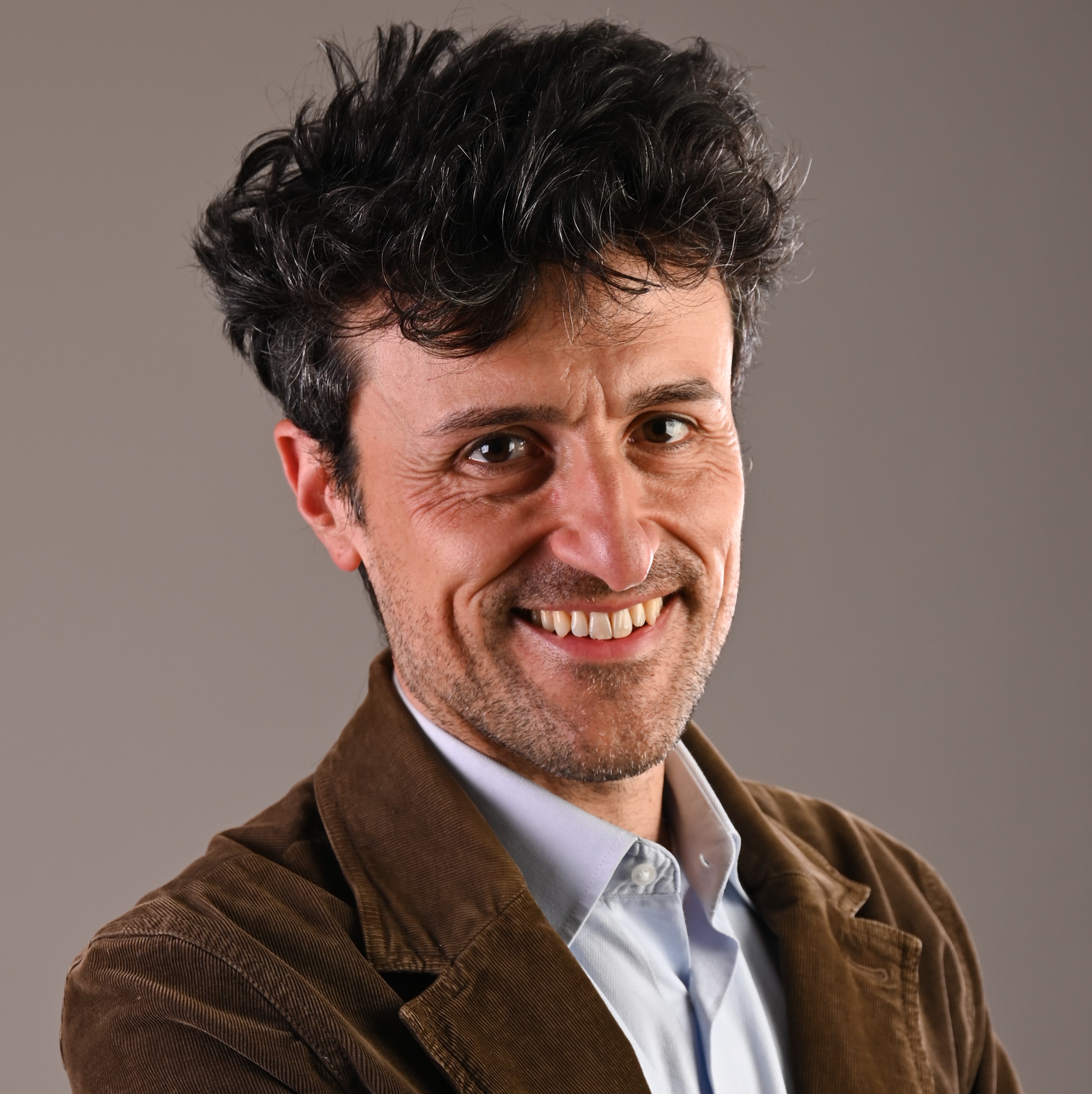 |
Speaker Bio: Jacopo Iannacci (Senior Member of the IEEE) was born in Bologna, Italy, in 1977. He received the MSc (Laurea) degree in electronics engineering from the University of Bologna, Italy, in 2003, and the PhD in information and telecommunications technology from the Advanced Research Center on Electronic Systems “Ercole De Castro” (ARCES) at the University of Bologna, Italy, in 2007. He received the Habilitation as Associate Professor in Electronics from the Italian Ministry of Education, University and Research (MIUR), in 2017, and the Habilitation as Full Professor in Electronics from the Italian Ministry of University and Research (MUR), in 2021. He worked in 2005 and 2006 as visiting researcher at the DIMES Technology Center (currently Else Kooi Lab) of the Technical University of Delft, the Netherlands, focusing on the development of innovative packaging and integration technology solutions for RF-MEMS (Radio Frequency passives in MEMS technology) devices. In 2016, he visited as seconded researcher the Fraunhofer Institute for Reliability and Microintegration IZM in Berlin, Germany, to conduct high-frequency characterization of RF-MEMS components jointly with the RF & Smart Sensor Systems Department at IZM. Since 2007, he is researcher (permanent staff) at the Center for Sensors & Devices of Fondazione Bruno Kessler, in Trento, Italy. His research interests and experience fall in the areas of Finite Element Method (FEM) multi-physics modelling, compact (analytical) modeling, design, optimization, integration, packaging, experimental characterization and testing for reliability of MEMS and RF-MEMS devices and networks for sensors and actuators, Energy Harvesting (EH-MEMS) and telecommunication systems, with applications in the fields of 5G, Internet of Things (IoT), as well as future 6G, Tactile Internet (TI) and Super-IoT. Dr. Iannacci authored more than 130 scientific contributions, including international journal papers, conference proceedings, books, book chapters and one patent. Since 2015, he is member of the editorial board of the Springer Microsystem Technologies. He is currently associate editor of the Springer Microsystem Technologies and of Frontier in Mechanical Engineering. He was and is currently involved in several international conferences as symposium chair/co-chair, session chair, technical program committee member, international advisory board member, tutorial lecturer and invited speaker, among which the following few are mentioned: IEEE Sensors; IEEE 5GWF/FNWF; SPIE Microtechnologies; ESSCIRC-ESSDERC; ESREF; MNDCS. |
Title: Physical and Virtual world – Bridging the gap in 6G
Abstract: This tutorial provides a quick overview of the effort from 6G cellular standards to support Immersive communication for 3D with high resolution video. This technology is expected to make a major impact on society by the end of this decade. To support it using 3GPP specifications, technologies currently being deployed in 5G such as eMBB (enhanced mobile broadband), URLLC (Ultra reliable low latency communication) and AI (Artificial Intelligence) which are being enhanced. This tutorial will presents typical applications that need such wireless technologies, to help the society and enhance our lives. Concepts of VR (Virtual reality), Metaverse and network performance needed to support high resolution 3D video or XR (Extended reality of VR headsets or smartphones) to display the virtual world, will be described.
In addition to entertainment applications like interactive games, others such as telesurgery, immersive learning, holographic conference will need this technology of 6G to bring about important changes. Realizing its importance, the 3GPP standard as well as ITU (Int’l Telecom Union) are working on detailed specifications to meet that goal. The major impact of 6G will be felt in driverless electric vehicles, smart manufacturing and agriculture and smart grids which will be discussed in this tutorial
Duration: 90 minutes | Category: 5G/6G core
 |
Speaker Bio: Krishnamurthy Raghunandan is a senior manager at MTA, New York City Transit, since 2005. He has been responsible for deployment of 5G services in all the subway stations and WiFi (both 2.4 GHz unlicensed and 4.9GHz licensed) at yards and stations. He was also instrumental in deploying millimetric wave links in rail yards to bring camera traffic to security booths. Prior to joining MTA, Raghu worked in Bell labs and was the RF Network lead at 3GPP standards. He was also responsible for field test of cell phones and Sirius satellite radio used in premium cars today. Raghu has bachelor’s, master’s and research degrees in Electrical engineering, with long standing career in wireless communication. He is the author of the textbook “Introduction to Wireless communication and networks – a practical perspective” which was published by Springer Nature in April 2022. This book was approved by the IEEE communication society as a textbook for undergraduate students in telecommunication. |
Title: 5G and beyond for eHealth
Abstract: The tutorial provides baseline information for use cases related to the eHealth and Emergency domains that would be enabled by the beyond-5G mobile network (B5G) technology. It contains key information for each use case regarding their definitions, implementation, technical requirements, and trials. The idea is to adopt these use cases to demonstrate the large-scale trialling of the B5G technology specifically devoted to eHealth and Emergency domains, by supporting the B5G applications in large-scale environments (e.g. hospitals) and bringing novel applications (e.g. Remote Proctoring and Smart Ambulance), introducing societal benefits through the development of innovative B5G/6G applications.
Main use cases considered are:
Use Case 6 “Mass Casualty Incident (MCI) and Emergency Rescue in Populated Area”, aiming to offer cutting-edge B5G technological solutions for the most effective coordination for first-case responders in the context of i) triage and coordination of resources at the scene of mass casualty incidents, which could be building collapses, earthquakes, fires, or other large-scale emergencies, and ii) an emergency evacuation in the context of a crowded sporting or cultural event.
Use Case 7 “Remote Proctoring”, aiming to support remote proctoring activities in the field of interventional cardiology, offering innovative solutions based on smart tools for telepresence in the surgical field to connect expert proctors and remote hospitals.
Use Case 8 “Smart Ambulance”, adopting a 5G-connected smart ambulance operating outdoor in mobility. the ambulance is equipped with i) new audio/video communication tools (Augmented Reality – AR - and virtual reality - VR - headsets) between operators on the ambulance and supporting experts in the hospital, ii) diagnostic tools for cardiological pathology and ii) devices to guarantee an efficient and fast 5G connection in remote locations and mobility conditions, including emergency high-speed travel through congested urban areas.
Use Case 9 “Adaptive Control of Hannes Prosthetic Device” (Pisa), focusing on designing advanced control capabilities for prostheses using Artificial Intelligence (AI) methods and deployment on the Hannes arm.
Tutorial Length: 60 minutes | Category: 5G/6G applications
Intended audience: verticals research, business employees, politicians, 5G technical experts
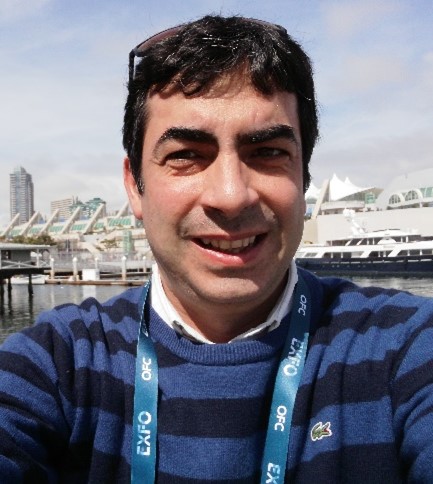 |
Seaker Bio: Andrea Di Giglio (Dr.Eng) received a Dr. Eng. degree in Electronic Engineering from the University of Pisa (Italy) and the Engineering License degree from Scuola S. Anna. He joined Telecom Italia Lab (formerly CSELT), that is the Telecom Italia Group's Company for study, research, experimentation, and qualification in the field of Telecommunications and Information Technology. The fields of his research are addressed toward Internet Security, Storage Area Networks and Optical Networks Architecture. He was involved in the architectural TIM - Uso Interno - Tutti i diritti riservati. Work Package of the IST Project Nobel (Phase 1 and 2) “Next generation Optical networks for Broadband European Leadership” as Work Package leader and ICT STRONGEST as project coordinator. Dr. Di Giglio is the author of dozens of publications, including books, conference papers and workshops and it is currently the project coordinator of 5G-SOLUTIONS, flagship project for European Commission research for the Verticals’ usage of 5G Connectivity. |
Webinar January 2022 Transdisciplinary Framework for 5G-Enabled Applications and Services in the New Reality
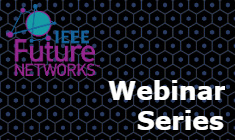 IEEE Future Networks Webinar:
IEEE Future Networks Webinar:
Transdisciplinary Framework for 5G-Enabled Applications and Services in the New Reality
Wednesday, 19 January 2022 | 11:00am ET
Presenter
Narendra Mangra, GlobeNet, LLC
About the Webinar
The COVID-19 pandemic and related sustained systemic shocks has fundamentally impacted business ecosystems and underlying global supply chains. These sustained systemic shocks along with technology developments, consumer usage trends, geopolitical, and macro-economic triggers may reshape industry structures or ecosystem stages. Furthermore, we are also grappling with critical changes needed to address access and inclusion to basic human services, social vulnerabilities, quality of life improvements in urban and rural communities, and long-term environmental changes. We are already witnessing fundamental changes related to climate-induced public safety needs, flexible working trends, telehealth, tourism, education, connected vehicles, urban planning, rural development, and much more. Technology innovations promise to help deliver solutions across ecosystems with maximum benefits delivered through appropriate governance.
It is imperative to explore new approaches to delivering applications and services. These approaches or frameworks should be sustainable, structured, flexible, adaptable, and scalable to better address complex issues and the local needs of diverse stakeholder groups, priorities, capabilities, and constraints in diverse communities. This webinar will describe the transdisciplinary framework with several scenarios provided in the latest IEEE FNI INGR Applications and Services Chapter. The transdisciplinary framework comprises of interconnected ecosystems, converged networks, and governance functions. Scenarios will include public safety and the event lifecycle, telehealth and the continuum of care, public health and pandemic response planning, transportation and urban land repurposing, comprehensive plans across the globe, smart cities, and rural development initiatives.
About the Speaker
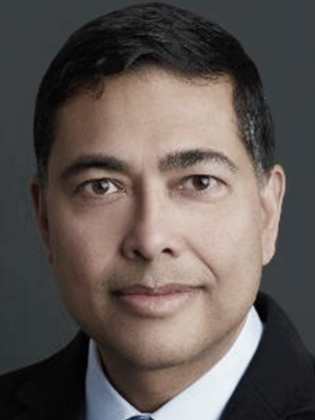
Narendra Mangra, GlobeNet, LLC
Narendra Mangra of GlobeNet LLC provides advisory and consulting services to clients in academia, industry, and government. He has both a deep foundation in the wireless telecommunications ecosystem and broad experience across mobile and fixed broadband telecommunications, public safety, agriculture, transportation, and health care ecosystems. His experience spans several key roles within the end-to-end mobile ecosystem, mobile network design and deployment lifecycle, procurement lifecycle, and program/project management lifecycles. Narendra is also the Co-Chair for several IEEE technology roadmap, standards development, and industry connection activities that include the Future Networks International Network Generations Roadmap (INGR), Applications and Services WG, Young Professionals Education, IEEE SA P1950.1 Smart Cities Architecture Standards Development, Transdisciplinary Framework Industry Connections, and the Telehealth Industry Connections.
On-demand recording coming soon
Presentation slides coming soon
FNTC Distinguished Lecturer Program
IEEE Future Directions launched the IEEE 5G Initiative in December 2016. To better reflect the IEEE contribution to current and future generations of networking, the initiative was re-branded to IEEE Future Networks, with the tagline Enabling 5G and Beyond, in August 2018.
The IEEE Future Networks Techncial Community (FNTC) will help pave a clear path through development and deployment of 5G and the great potential it enables, while envisioning the landscape of connectivity and applications beyond 5G. Recognizing that networking is larger than a single technology, standard, organization, or region, IEEE Future Networks is gathering the world’s researchers, scientists, engineers, and policymakers from industry, academia, and governments to solve the challenges and reveal the opportunities associated with current and future networks.
The experts participating in IEEE Future Networks draw upon practical knowledge gained working with previous generations of networking and consider current trends of technology evolution to foresee the meaningful shifts coming our way.
The Future Networks Technical Community is actively pursuing the following goals:
- Providing practical, timely technical content in tutorials, webinars, podcasts, published articles, workshops, and conferences.
- Establishing a 5G and Beyond Technology Roadmap, which identifies short- (~3 years), mid- (~5 years) and long-term (~10 years) research, innovation, and technology trends in the communications ecosystem for the purpose of maintaining and continually enhancing a living document with a clear set of recommendations.
- Launching a Distinguished Lecturer Program (FNTC-DLP) to disseminate and share information about the technology, roadmap and application delivered by rebound experts from various societies of IEEE.
Q&A
- Q: How is the FNTC DL program offered?
A: FNTC DL program was previously only offered as a Virtual DL program. Now, both Virtual and In-person DL programs are offered.
- Q: What is the Virtual DL program? A: Is it the same as an on-line webinar?
A: Virtual DL is a DL who is willing to participate in offering DL talks virtually to various society chapter(s) and / or community of interests.
- Q: For Chapter meetings, what is the difference between getting a guest speaker versus having a DLP?
A: A DL speaking at a DLP event is meeting the program and guidelines of the DLP. This is different than inviting a guest speaker for the meeting. - Q: If a DL is joining a non DL into an event, can the event be called a DLP event?
A: No, a DL can be a presenter along with a non-DL for virtual events. This can’t be called a DLP but rather a virtual webinar, virtual workshop, virtual summit, virtual conference, etc. but it is left to the organizing committee to acknowledge the speaker who is a DL. Thus, non-VDL events that may include a mix of DL and non-DL speakers is organized by the host Chapters and supported by their Regional Board. - Q: Is copyright required for DLP?
A: Regarding the copyright issues, there will be no copyright protection as it will be delivered without restrictions.
Nomination Form
Nominate a member using the
| Nomination Form |
All Distinguished Lecturers are available upon request. For more details or to make a request, please email This email address is being protected from spambots. You need JavaScript enabled to view it.
Distinguished Lecturers
| Name | Bio | Lecture Date |
|
Jeffrey H. Reed
|
Professor Jeffrey Reed is the Willis G. Worcester Professor of ECE. Professor Reed’s research interests are wireless communications, wireless security, cognitive radio, software radio, telecommunications policy, and spectrum access. Reed has co-authored more than 500 articles and books. In addition, Reed co-founded several commercial companies, including PFP Cybersecurity, which provides security solutions for IoT devices, and Federated Wireless, which commercializes spectrum sharing. Reed is the Founding Director of Wireless@Virginia Tech, a university research center, and co-founder of Virginia Tech’s Hume Center for National Security and Technology, where he served as the Interim Director. He also served as the Interim Director of the Commonwealth Cyber Initiative and is currently its CTO. Dr. Reed is a Fellow of the IEEE For contributions to software radio and communications signal processing and for leadership in engineering education. |
29 November 2023 |
|
Rajeev Shorey
|
Rajeev Shorey is the former CEO of the University of Queensland – IIT Delhi Academy of Research (UQIDAR) at IIT Delhi, India. He received his Ph.D. and MS (Engg) in Electrical Communication Engineering from the Indian Institute of Science (IISc), Bangalore, India. He received his B.E degree in Computer Science and Engineering from IISc. Dr. Shorey’s work has resulted in more than 75 publications in international journals and conferences and 13 US patents in the area of wireless, wired networks, including wireless security. |
Lecture at Northwestern University
|
|
Sumit Roy
|
Sumit Roy received the B. Tech. degree from the Indian Institute of Technology (Kanpur) in 1983, and the M. S. and Ph. D. degrees from the University of California (Santa Barbara), all in Electrical & Comp. Engineering respectively, as well as an M. A. in Statistics and Applied Probability. He was appointed to Integrated Systems Professor (2014-19) of Electrical & Computer Engineering, Univ. of Washington-Seattle where his research and technology transition interests have included design and evaluation of wireless communication and sensor network systems with an emphasis on 5G & beyond technologies, multi-standard inter-networking and coexistence using software-defined networking approaches. He spent 2001-03 at Intel Wireless Technology Lab as a Senior Researcher engaged in systems architecture and standards development for ultra-wideband systems (Wireless PANs) and next generation high-speed wireless LANs. He has been active in IEEE Communications Society in various roles (journal editor and Distinguished Lecturer) and was elevated to IEEE Fellow (2007) for ``contributions to multi-user communications theory and cross-layer design of wireless networking standards”. He served 2 terms as (elected) member of Executive Committee, National Spectrum Consortium dedicated to efficient spectrum sharing between Federal and commercial networks and is the co-author of IEEE TAES 2016 Best paper award for work on Radar-Comm coexistence. He recently served as Program Lead for Innovate Beyond 5G for OUSD R&E within the 5G-to-xG initiative https://www.cto.mil/5g/ where he helped define and execute a research and prototyping agenda as part of US DoD’s evaluation and adoption of beyond 5G for national defense applications. |
|
|
Prof Mischa Dohler
|
Mischa DohlerMischa Dohler is now VP Emerging Technologies at Ericsson Inc. in Silicon Valley, working on cutting-edge topics of 6G, Metaverse, XR, Quantum and Blockchain. He serves on the Technical Advisory Committee of the FCC and on the Spectrum Advisory Board of Ofcom. He is a Fellow of the IEEE, the Royal Academy of Engineering, the Royal Society of Arts (RSA), the Institution of Engineering and Technology (IET); and a Distinguished Member of Harvard Square Leaders Excellence. He is a serial entrepreneur with 5 companies; composer & pianist with 5 albums on Spotify/iTunes; and fluent in several languages. He has had ample coverage by national and international press and media, and is featured on Amazon Prime.
He is a frequent keynote, panel and tutorial speaker, and has received numerous awards. He has pioneered several research fields, contributed to numerous wireless broadband, IoT/M2M and cyber security standards, holds a dozen patents, organized and chaired numerous conferences, was the Editor-in-Chief of two journals, has more than 300 highly-cited publications, and authored several books. He is a Top-1% Cited Innovator across all science fields globally.
He was Professor in Wireless Communications at King’s College London and Director of the Centre for Telecommunications Research from 2013-2021, driving cross-disciplinary research and innovation in technology, sciences and arts. He is the Cofounder and former CTO of the IoT-pioneering company Worldsensing; cofounder and former CTO of the AI-driven satellite company SiriusInsight.AI, and cofounder of the sustainability company Movingbeans. He also worked as a Senior Researcher at Orange/France Telecom from 2005-2008.
|
13 September 2023 |
|
Kumar Vijay Mishra
|
Kumar Vijay Mishra (S’08-M’15-SM’18) obtained a Ph.D. in electrical engineering and M.S. in mathematics from The University of Iowa in 2015, and M.S. in electrical engineering from Colorado State University in 2012, while working on NASA’s Global Precipitation Mission Ground Validation (GPM-GV) weather radars. He received his B. Tech. summa cum laude (Gold Medal, Honors) in electronics and communication engineering from the National Institute of Technology, Hamirpur (NITH), India in 2003. He is currently Senior Fellow at the United States DEVCOM Army Research Laboratory (ARL), Adelphi; Technical Adviser to Singapore-based automotive radar start-up Hertzwell and Boston-based imaging radar startup Aura Intelligent Systems; and honorary Research Fellow at SnT - Interdisciplinary Centre for Security, Reliability and Trust, University of Luxembourg. |
20 December 2022 |
|
Ashutosh Dutta
|
Ashutosh Dutta is currently Chief 5G Strategist and JHU/APL Sabbatical Fellow at Johns Hopkins University Applied Physics Labs (JHU/APL), USA. He also serves as Chair for Electrical and Computer Engineering for Engineering Professional Program at JHU. His career, spanning more than 30 years, includes Director of Technology Security and Lead Member of Technical Staff at AT&T, CTO of Wireless at a Cybersecurity company NIKSUN, Inc., Senior Scientist in Telcordia Research, Director of Central Research Facility at Columbia University, adjunct faculty at NJIT, and Computer Engineer with TATA Motors. Ashutosh is author of more than 100 technical papers and 31 issued patents. Ashutosh is co-author of the book, titled, “Mobility Protocols and Handover Optimization: Design, Evaluation and Application” published by IEEE and John & Wiley. As a Technical Leader in 5G and security, Ashutosh has been serving as the founding Co-Chair for the IEEE Future Networks Initiative that focuses on 5G standardization, education, publications, testbed, and roadmap activities. Ashutosh is IEEE Communications Society's Distinguished Lecturer for 2017-2020 and as an ACM Distinguished Speaker (2020-2022). Ashutosh currently serves as the founding co-chair for IEEE Future Networks Initiative and Member-At-Large for IEEE Communications Society. He co-founded the IEEE STEM conference (ISEC) and helped to implement EPICS (Engineering Projects in Community Service) projects in several high schools. Ashutosh has served as the general Co-Chair for the IEEE STEM conference for the last 10 years. Ashutosh served as the Director of Industry Outreach for IEEE Communications Society from 2014-2019. He was recipient of 2009 IEEE MGA Leadership award and 2010 IEEE-USA professional leadership award. Ashutosh currently serves as Member-At-Large for IEEE Communications Society for 2020-2022. Ashutosh has served as the general Co-Chair for the premier IEEE 5G World Forums and has organized 75 5G World Summits around the world. Ashutosh currently serves as the Chair for IEEE Industry Connection’s O-RAN activities. Ashutosh is a Distinguished Alumnus of NIT Rourkela with BS in Electrical Engineering, MS in Computer Science from NJIT, and Ph.D. in Electrical Engineering from Columbia University under the supervision of Prof. Henning Schulzrinne. Ashutosh is a Fellow of IEEE and Distinguished member ACM. |
Available |
|
Fawzi Behmann
|
Fawzi is the founder and president of TelNet Management Consulting Inc., offering professional services in the areas of technology trends, positioning, and building smart networking solutions. Fawzi is a distinguished Lecturer, co-author of a book on Collaborative Internet of Things, and a Co-founder of the "IoT in Healthcare Consortium." Fawzi held various executive and leadership positions with Tier 1 companies in the areas of communications and networking in Canada and US. He championed the development of Telecom Network Management systems, led efforts in rolling out product releases for network edge and core and marketed SoC product line and roadmap. As a senior member and volunteer with IEEE, Fawzi is serving as the North America Director for Communications Society and BOG member. He is a voting member of IEEE Conference Committee, Future Networks Technical Community Chair elect, Co-Chair of Future Network Education working group, Co-Chair of IEEE Transdisciplinary Framework working group and contributor to Future Network Roadmap’s security, applications & services working groups. Fawzi chaired several conferences, summits, and panels. Among the most recent is the General Chair of IEEE WCNC 2022. Among other positions held, Fawzi was the IEEE Region 5 Conference Committee Chair, IEEE Central Texas Section Chair, and chair of multiple joint chapters in Communications, Signal Processing, Computer, EMBS and Consumer Technology. Fawzi has received multiple awards for his leadership, including the IEEE USA professional leadership award and IEEE Communications Society NAB Exceptional Service Award. He holds an MBA, Master's in Computer Science, and Bachelor's in Science with Honors in Mathematics with Distinction. |
Available upon request |
|
Periklis Chatzimisios
|
Periklis Chatzimisios serves as Professor in the Department of Information and Electronic Engineering at the International Hellenic University (Greece). Moreover, he has been awarded the title of Researcher Professor by the University of New Mexico (USA). He is also a Visiting Fellow in the Faculty of Science & Technology, Bournemouth University (UK). Dr. Chatzimisios is/has been involved in several standardization and IEEE activities under the IEEE Communication Society (ComSoc). He is currently the Chair of the IEEE ComSoc Young Professionals Standing Committee, Chair of the Communications Chapter & Professional Activities for the IEEE Greece Section and an active member of the IEEE Future Networks Initiative. His research interests include performance evaluation and standardization of mobile/wireless communications, Internet of Things, 5G/6G, Industry 4.0, Public Safety, Smart Cities and vehicle networking. |
Available |
|
Dr Saba Al-Rubaye
|
Saba Al-Rubaye (IEEE Life Member), Reader and Head of Advanced Connectivity & System Integration research group in the School of Aerospace, Transport and Manufacturing at Cranfield University, United Kingdom. Dr Al-Rubaye has more than 20 years of professional experience in the industry and academia with demonstrated track record of launching innovative solutions in design, testing, consultation, leadership, and program development. Dr Al-Rubaye has been involved in several projects sponsored by Innovation UK, Research England, EPSRC, Department for Transport, Natural Sciences and Engineering Research Council of Canada (NSERC), and USA Government. Dr Al-Rubaye is participating in developing industry standards by being an active research group member of IEEE P1932.1 standard of License/unlicensed Interoperability and IEEE P1920.2, Standard for Vehicle-to-Vehicle Communications for Unmanned Aircraft Systems. Dr Al-Rubaye has published many papers in IEEE journals and conferences and a recipient of the best technical paper award twice published in IEEE Vehicular Technology in 2011 and 2015, respectively. Dr Saba Al-Rubaye is a Chartered Engineer (CEng), MIET, Life Senior member IEEE, and she is holding commercial certificate of Unmanned Aircraft Systems (UAS) Pilot in the UK. |
Available |
|
Prof. Danda B. Rawat
|
Dr. Danda B. Rawat is the Executive Director, Research Institute for Tactical Autonomy (RITA) - a University Affiliated Research Center (UARC) of the US Department of Defense, Associate Dean for Research & Graduate Studies, a Full Professor in the Department of Electrical Engineering & Computer Science (EECS), Founding Director of the Howard University Data Science & Cybersecurity Center, Founding Director of DoD Center of Excellence in Artificial Intelligence & Machine Learning (CoE-AIML), Director of Cyber-security and Wireless Networking Innovations (CWiNs) Research Lab, Graduate Program Director of Howard CS Graduate Programs and Director of Graduate Cybersecurity Certificate Program at Howard University, Washington, DC, USA. Dr. Rawat is engaged in research and teaching in the areas of cybersecurity, machine learning, big data analytics and wireless networking for emerging networked systems including cyber-physical systems (eHealth, energy, transportation), Internet-of-Things, multi domain operations, smart cities, software defined systems and vehicular networks. He has secured over $110 million as a PI and over $18 million as a Co-PI in research funding from the US National Science Foundation (NSF), US Department of Homeland Security (DHS), US National Security Agency (NSA), US Department of Energy, National Nuclear Security Administration (NNSA), National Institute of Health (NIH), DoD and DoD Research Labs, Industry (Microsoft, Intel, VMware, PayPal, Mastercard, Meta, BAE, Raytheon etc.) and private Foundations. Dr. Rawat is the recipient of NSF CAREER Award in 2016, Department of Homeland Security (DHS) Scientific Leadership Award in 2017, Provost's Distinguished Service Award 2021, the US Air Force Research Laboratory (AFRL) Summer Faculty Visiting Fellowship 2017, the Best Paper Awards (IEEE CCNC, IEEE ICII, IEEE DroneCom and BWCA) among others. Dr. Rawat has published over 300 scientific/technical articles and 11 books. He has been serving as an Editor/Guest Editor for over 100 international journals including the Associate Editor of IEEE Transactions on Cognitive Communications and Networking, Associate Editor of IEEE Transactions of Service Computing, Editor of IEEE Internet of Things Journal, Associate Editor of IEEE Transactions of Network Science and Engineering and Technical Editors of IEEE Network. He has been in Organizing Committees for several IEEE flagship conferences such as IEEE INFOCOM, IEEE CNS, IEEE ICC, IEEE GLOBECOM and so on. He served as a Vice Chair of the Executive Committee of the IEEE Savannah Section from 2013 to 2017. Dr. Rawat is a Senior Member of IEEE and ACM, a member of ASEE and AAAS, and a Fellow of the Institution of Engineering and Technology (IET). He is an ACM Distinguished Speaker (2021- 2023). |
Available |
|
Julia Urbina-Pineda
|
Julia, was born in Information Security from the elaboration of her thesis Intrusion Detection Systems to obtain the degree of Electronic and Communications Engineering by the UDLAP. She went on to study for a Master of Science with a specialty in Telecommunications and Predictive Algorithms in Handover Trigger for IEEE 802.16e at the TEC Monterrey campus, where she was awarded as an honorary member by the IEEE Eta Kappa Nu in 2013. Since 2017, Julia is co-founder of the company called CYBERIIoT, specialized in Industrial Cybersecurity (ICS/SCADA) and belongs to the Working Group 5G Security by IEEE Future Networks since 2018. In 2020 she became Cybersecurity Policy Expert by the Global Foundation for Cybersecurity Studies and Research - USA she is Executive Director 5G and Industry 4.0 for Mexico and LATAM by the IoT Security Institute - Australia This 2021 she was named Chapter Chair of the Communications Society for IEEE Puebla, to date. She was also elected as Vice President Liason for the Association IEEE P2994TM standard - Standard for Security Assessment Framework for IoT and Planning Section Chief Volunteer for ICS4ICS (Incident Command System for Industrial Control Systems), ISA-GCA (International Society of Automation & Global Cybersecurity Alliance) and FEMA (Federal Emergency Management Agency) This 2022 she serves as Leader of the 5G Cybersecurity Risk Group within work table 5, for the national deployment of 5G in Mexico by the IFT (Federal Institute of Telecommunications). |
Available upon request |
Webinar 31 August 2022 INGR Webinar Series: Future In-Building Networks
 INGR Webinar Series: Future In-Building Networks
INGR Webinar Series: Future In-Building Networks
Wednesday 31 August 2022 | 11:00am ET
Presenter
Volker Jungnickel
About the Webinar
This Webinar will highlight current technologies and future evolution of in-building networks that handle most Internet traffic nowadays. Buildings today are networked via copper (e.g. Ethernet, Powerline Communications, PLC) and radio (e.g. Wi-Fi, ZigBee). In the next decade, machines and devices will communicate wireless and support e.g. reliable real-time video. For the future Internet of Things, dense in-building networks will be deployed which complement copper and radio by optical technologies, both over fixed (fiber-to-the-room, FTTR) and wireless links (light fidelity, LiFi). We highlight unique features of light as a fixed and wireless medium in buildings and present recent technology trends to enable new features for high performance, integrated sensing, low cost and enhanced sustainability.
About the Presenter
Volker Jungnickel, Fraunhofer Institute for Telecommunications
Volker Jungnickel (M) received doctoral and habilitation degrees in Physics and Communications Engineering in 1995 and 2015, respectively. He joined Fraunhofer HHI in 1997, working on optical wireless communications, multiple antennas in mobile networks and fixed optical access networks. Volker teaches courses and supervises students at TU Berlin, which appointed him as extraordinary professor in 2021. Volker serves in optical wireless standards as chair of IEEE P802.15.13 and technical editor of IEEE P802.11bb projects.
On-demand recording &
PDF presentation slides to be posted by 07-September 2022, pending approval
Webinar June 2022 The Road to 6G: INGR Mapping Future Networks into 2032
 IEEE Future Networks Webinar: The Road to 6G - INGR Mapping Future Networks into 2032
IEEE Future Networks Webinar: The Road to 6G - INGR Mapping Future Networks into 2032
Wednesday 1 June 2022 | 11:00am ET
Presenters
Baw Chng, Dilip Krishnaswamy, and Lyndon Ong
About the Webinar
2022 and the next two years will be a time of heavy 5G deployment, transformation at the edge, and increased interworking of network technologies and systems. But what can we expect in five or even or ten years from now? The 2022 Edition of the IEEE INGR (International Network Generations Roadmap) points to current and forward-looking trends, challenges, and solutions in the mobile network landscape. The inaugural INGR was released in 2020 with a focus on the evolution of 5G networks, and the 2021 edition took an end-to-end perspective that established a transdisciplinary framework and a predictive model for mobile networks. The 2022 INGR broadens applications of the transdisciplinary framework while progressing the technology and system challenges and opportunities across each of INGR’s 14 Working Groups.
In this IEEE Future Networks webinar, leaders from four of those Working Groups — Applications and Services, Deployment, Energy Efficiency, and Massive MIMO — get together to present some of the latest insights form their group before joining a panel discussion to explore the convergences between them all.
About the Presenters
On-demand recording coming soon
Click Here to access PDF presentation slides
Webinar May 2022 Systems Optimization for Future Networks
 INGR Webinar Series: Systems Optimization for Future Networks
INGR Webinar Series: Systems Optimization for Future Networks
Wednesday 1 May 2022 | 11:00am ET
Presenters
Baw Chng, Dilip Krishnaswamy, and Lyndon Ong
About the Webinar
Systems Optimization for future networks and network services will be a challenge due to the variance across services, traffic types and control architectures needed to support 5G/6G. Future networks will need greater local automation and intelligence for optimization of resources to keep costs controlled, but at the same time need to incorporate higher level, end-to-end optimization and policies for the operator. This webinar will review the work of the IEEE Future Networks Systems Optimization Working Group, explore some of the important use cases for systems optimization such as Open RAN, and highlight the challenges for systems optimization for future networks over the next 10 years.
.
About the Presenters
Baw Chng is a technologist, inventor, and author who consults in the wireless networking and telecommunications industry. Baw Chng has been awarded multiple patents in such areas as network and system architecture, network planning, security and authentication, mobility, system selection, service provisioning, access control, user interface and user experience, and network management. Baw Chng has published papers on computer networking, computer architecture, and magnetic recording in peer reviewed publications. Baw Chng has done pioneering work on femtocell and small cell technologies and his body of work spans across a broad array of critical technologies including Wi-Fi (mesh and infrastructure), cellular communications, Internet-of-Things (IoT), low-power wide-area network (LPWAN), network function virtualization (NFV), software defined networking (SDN), self-organizing and self-optimizing network (SON), cloud computing, plastic optical fiber (POF), optical networking, QoS
Dilip Krishnaswamy received a PhD in electrical engineering from the University of Illinois at Urbana-Champaign. He is an inventor on 60+ granted US patents, and has co-authored 70+ research publications. He has worked at Intel Corp., Qualcomm Research, IBM Research, and Jio Platforms, and he is currently a senior principal architect at Sterlite Access Solutions.
Lyndon Ong is Principal, Advanced Architecture in the Office of the CTO at Ciena Corporation and has headed numerous projects in network control and SDN at Ciena, receiving the Ciena Technical Fellow award in 2014. He is a co-chair of the Open RAN Alliance (O-RAN) Cloudification and Orchestration Working Group and Project Leader for the ONF’s Open Transport Configuration and Control (OTCC) Project, as well as co-chair of the IEEE INGR Systems Optimization WG. Dr. Ong received his doctoral degree from Columbia University in 1991.
On-demand recording coming soon
Click Here to access PDF presentation slides
Webinar March 2022 Open RAN Challenges and Opportunities for Future Wireless Networks
 IEEE Future Networks Webinar: Open RAN - Challenges and Opportunities for Future Wireless Networks
IEEE Future Networks Webinar: Open RAN - Challenges and Opportunities for Future Wireless Networks
Wednesday 16 March 2022 | 11:00am ET
Presenters
Ashutosh Dutta, Brian K. Daly, Manish Singh and Michele Polese
About the Webinar
In the world of mobile communications, we are seeing more and more wireless network operators embracing the concept of an open ecosystem. Two primary goals of Open Radio Access Network (Open RAN) are to stimulate innovation and reduce costs in telecommunications by introducing competition, interoperability, and intelligence in an open ecosystem. Since initial trials and deployments, the Open RAN community has also come to the view that harmonization among different standards and specifications is crucial to realize the new paradigm's full potential. What is Open RAN’s “killer app” and what is driving Open RAN research and deployment? In this webinar panel, we will discuss the challenges and opportunities as well as future directions for an open ecosystem of wireless networks.
.
About the Presenters
Michele Polese's research focuses on the design and evaluation of next-generation wireless networks from a system-level perspective. I am interested in the design of algorithms and architectures for mmWave cellular networks, in the application of machine learning techniques to self organizing networks, and in the full-stack, end-to-end performance evaluation of complex networks. I collaborated with several academic and industrial research partners, including Intel, InterDigital, NYU, AT&T Labs, University of Aalborg, King's College, Northeastern University and NIST.
Ashutosh Dutta is currently Chief 5G Strategist and Sabbatical Fellow at Johns Hopkins University Applied Physics Labs (JHU/APL), USA. His career, spanning more than 30 years, includes Director of Technology Security and Lead Member of Technical Staff at AT&T, CTO of Wireless at cybersecurity company NIKSUN, Inc., Senior Scientist in Telcordia Research, Director of Central Research Facility at Columbia University, adjunct faculty at NJIT, and Computer Engineer with TATA Motors. Ashutosh is author of more than 100 technical papers and 31 issued patents. He currently serves as the founding co-chair for IEEE Future Networks Initiative and Chair for IEEE SA Open RAN Industry Connections activities. Ashutosh is a Distinguished Alumnus of NIT Rourkela with BS in Electrical Engineering, MS in Computer Science from NJIT, and Ph.D. in Electrical Engineering from Columbia University under the supervision of Prof. Henning Schulzrinne. Ashutosh is a Fellow of IEEE and Distinguished member ACM.
Manish Singh is a well-respected industry leader with over 20 years of experience and specializes in Wireless Networks. Manish currently supports the OpenRAN and Open Core Network Project Groups in TIP (Telecom Infra Project). For three consecutive years, he served on the Board of Small Cell Forum. Manish is a Thought Leader with good balance of technology depth and business acumen. Before joining Meta, Manish was VP of Network Services at Tech Mahindra. And prior to that Manish served as Radisys’ CTO where he spearheaded the company’s strategic initiatives in SDN, NFV and VoLTE (Voice-over-LTE). Prior to Radisys, Manish was the VP of Product Management at Continuous Computing, where he led the startup’s spectacular growth in Small Cells and DPI. During the course of his career Manish held various Management and Architect positions at Intel, Trillium Digital Systems and C-DOT.
Brian Daly is an AT&T Fellow and Assistant Vice President for Standards & Industry Alliances for AT&T. Brian oversees AT&T’s strategy and leadership in global industry standards. Brian is engaged in programs with the DHS, DISA, and DoD, and is a leading contributor to the Alliance for Telecommunication Industry Solutions (ATIS) Board, TOPS Council and Standards Committee initiatives, resulting in the implementation of key industry standards. Brian is on the Executive Committee of the National Spectrum Consortium and holds appointments to the FCC’s Technological Advisory Council (TAC) and Communications Reliability, Security, and Interoperability Council (CSRIC). Brian also is a member of the FBI’s Infragard partnership. His industry leadership roles include Co-chair of the Next G Alliance Steering Group, co-chair of the O-Ran Alliance Standards Development Focus Group, Chair of the GSM Association’s North American Fraud Forum and Security Group, and former co-chair of the ANSI Unmanned Aircraft Systems Standardization Collaborative Critical Infrastructure & Environment working group.
On-demand recording coming soon
Click Here to access PDF presentation slides
Webinar January 2023 FNI Webinar Series: Micro/Nano Systems and Technologies as Enablers of 6G, Super-IoT and Future Networks
 IEEE Future Networks Webinar Series: Micro/Nano Systems and Technologies as Enablers of 6G, Super-IoT and Future Networks
IEEE Future Networks Webinar Series: Micro/Nano Systems and Technologies as Enablers of 6G, Super-IoT and Future Networks
Wednesday 18 January 2023 | 11:00am ET
Speaker
Jacopo Iannacci
About the Webinar
About the Webinar
Looking to 2030, the future data- and communication-centric paradigms of 6G, Super-IoT (Internet of Things), and Tactile Internet (TI) will require leaps forth at technology and, notably, at a conceptual level. Artificial Intelligence (AI) will be a cornerstone both on the service and network operation plane, leveraging self-sustenance and self-evolution of the infrastructure. Within such a context, the currently-in-use design methods for hardware-software (HW-SW) systems are regarded as increasingly less suitable to meet the challenge fully. This webinar will focus on low-complexity HW components, like sensors, actuators, and transducers, gathering attention around Micro/Nano (MEMS/NEMS) technologies. Reinforcement of the HW versus SW separation and symmetry is proposed, overcoming the so-called HW-SW divide. Partial reformulation of the HW concept is proposed, leveraging the parallelism of HW/SW with classical elements in nature. The resulting frame of reference is named WEAF Mnecosystem (Water, Earth, Air, and Fire Micro/Nanotechnologies Ecosystem). It embodies solutions based on Micro/Nanotechnologies, regarded as pivotal in the transition to 6G/TI. Then, the WEAF Mnecosystem landscape is populated by reporting state-of-the-art research activities based on Micro/Nanotechnologies, identified as key enablers of the future paradigms at stake.
About the Presenter
Jacopo Iannacci, Fondazione Bruno Kessler (FBK), Trento, Italy
Jacopo Iannacci (M’20, SM’21) received the MSc (Laurea) degree in electronics engineering from the University of Bologna, Italy, in 2003, and the PhD in information and telecommunications technology from the Advanced Research Center on Electronic Systems “Ercole De Castro” (ARCES) at the University of Bologna, Italy, in 2007. He received the Habilitation as Associate Professor in Electronics from the Italian Ministry of Education, University and Research (MIUR), in 2017, and the Habilitation as Full Professor in Electronics from the Italian Ministry of University and Research (MUR), in 2021. He worked in 2005 and 2006 as visiting researcher at the DIMES Technology Center (currently Else Kooi Lab) of the Technical University of Delft, the Netherlands, focusing on the development of innovative packaging and integration technology solutions for RF-MEMS devices. In 2016, he visited as seconded researcher the Fraunhofer Institute for Reliability and Microintegration IZM in Berlin, Germany, to conduct high-frequency characterization of RF-MEMS components jointly with the RF & Smart Sensor Systems Department at IZM. Since 2007, he is researcher (permanent staff) at the Center for Sensors & Devices of Fondazione Bruno Kessler, in Trento, Italy. His research interests and experience fall in the areas of Finite Element Method (FEM) multi-physics modelling, compact (analytical) modeling, design, optimization, integration, packaging, experimental characterization and testing for reliability of MEMS and RF-MEMS devices and networks for sensors and actuators, Energy Harvesting (EH-MEMS) and telecommunication systems, with applications in the fields of 5G, Internet of Things (IoT), as well as future 6G, Tactile Internet (TI) and Super-IoT.
On-demand recording
Webinar September 2022 FNI Webinar Series: IEEE Connecting the Unconnected Challenge Panel
 IEEE Connecting the Unconnected Challenge: Panel on Lessons Learned and Project Updates
IEEE Connecting the Unconnected Challenge: Panel on Lessons Learned and Project Updates
Wednesday 21 September 2022 | 11:00am ET
Panelists
Eric Nitschke, Rahma Utami, Filippo Malandra
About the Webinar
The IEEE Connecting the Unconnected Challenge (https://ctu.ieee.org/) is an annual, global competition that solicits solutions from start-ups, grassroots organizations, universities, or individuals with projects or ideas to bridge the digital divide in innovative ways. Organized by the IEEE Future Networks Initiative and other partners, the competition seeks applications from early-stage projects that offer unique ways to increase Internet access and usage for unconnected populations/geographies.
In this Webinar, we invite a panel of 2021 CTU winners to share their first-hand experiences on how their ideas and projects help close the digital divide, as well as lessons learned from participating in the CTU contest and latest updates on their projects from the past year. Please join our Webinar to learn more about the IEEE CTU challenge and hear directly from past CTU winners.
About the Presenter
Eric Nitschke,Wakoma
Rahma Utami,Suarise
Filippo Malandra,University at Buffalo
Eric Nitschke is a social entrepreneur using open and human-centered approaches to solve complex education and connectivity challenges. Eric is the founder and CEO of Wakoma, a social enterprise building open hardware and software solutions that enable communities to design, build and share their own network infrastructure and localized content and services which operate offline and online. Eric is a strong advocate for meaningful connectivity, digital inclusion, and open education.
Rahma Utami is founder and accessibility director in Suarise, an Indonesian-based social enterprise that focuses on disability inclusion in the digital sector. Before focusing on digital accessibility, she spent 10 years in the digital advertising industry and design, and became an accessibility consultant in the UK. She holds a bachelor in visual communication design from ITB, and a Masters of Digital Media practice for Development and Social change from University of Sussex. In Ba11y, her responsibility is in product development.
Filippo Malandra (M’16) is an Assistant Professor in the Department of Electrical Engineering at the University at Buffalo and director of the Wireless Network for Smart Systems (WN4SS) Lab. He received his Ph.D. in Electrical Engineering from Polytechnique Montreal in 2016, and a B.Eng. and a M.Eng. in Telecommunications Engineering from Politecnico di Milano in 2008 and 2011, respectively. His research interests include the performance analysis and design of mobile networks for smart cities, smart grid and IoT applications, the design of new solutions to provide broadband Internet access to underserved communities.
On-demand recording
PDF presentation slides to be posted within 24 hours of the webinar
5G Networks for Rural and Remote Areas Applications
 IEEE Future Networks Webinar:
IEEE Future Networks Webinar:
5G Networks for Rural and Remote Areas Applications
Friday, 28 June 2019 | 11:00am ET
Presenter
Luciano Leonel Mendes, Professor, Inatel
About the Webinar
5G networks are being pointed out as the next revolution in mobile communications. Different from the evolution observed from 2G to 4G networks, 5G will not only increase the user throughput, but it will also introduce a large set of new services and applications. Of course, more data rate is expected to be provided by the enhanced mobile broadband, but other interesting services will make 5G unique. The support for massive machine type communication will boost the Internet of Things and it will provide more inputs for Big Data analytics. Ultra-reliable low latency communications will change the way we interact with mobile devices and it will support the Industry 4.0. Therefore, 5G is not an evolution, but it is an innovative and revolutionary mobile network.
Although 5G is changing the mobile communications game, there is one gap that need to be surpassed, which is the connectivity in remote areas. This application scenario has important social and economic impacts and 5G should be able to address its requirements in the near future. Billions of people live in uncovered or underserved areas, unable to enjoy the benefits of the Digital Era. A reliable and cost accessible 5G for Remote Areas Network would offer the opportunity for these people to be included in the digital world, opening new markets for operators and new opportunities for vendors. Also, agribusiness is demanding higher efficiency from the fields and the ability to collect data and remotely control the machinery and systems (such as watering) is essential for improving productivity in farms.
The aim of this webinar is to discuss the possibilities for 5G to support and address the remote area networks requirements and to present the major technologies that can help in this challenging task.
The topics covered in this webinar are:
- Brief history of the mobile network evolution
- Main aspects and scenarios for 5G networks
- What is missing for a universal Internet access?
- Motivations and applications for Remote Areas Networks
- Enablers technologies for remote area operation
- 5G and satellite networks integration: solution for backhaul and remote areas access networks.
- Main projects developing the 5G network for remote areas.
About the Speaker
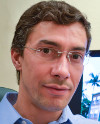 Luciano Leonel Mendes received the BSc. and MSc. degrees in Electrical Engineering from Inatel, Brazil in 2001 and 2003, respectively. In 2007 he received the Doctor degree in Electrical Engineering from Unicamp, Brazil. Since 2001 he is a professor at Inatel, where he has acted as the technical manager of the hardware development laboratory from 2006 to 2012. He has coordinated the Master Program at Inatel from 2010 to 2013 and he has led several research projects funded by FAPEMIG, FINEP and BNDES. From 2013 to 2015 he was a visiting researcher at the Technical University of Dresden in the Vodafone Chair Mobile Communications Systems, where he has developed his post-doctoral program sponsored by CNPq. Since 2015, he acts as the Research Coordinator of the Radiocommunication Reference Center at Inatel, which is a research project aiming at addressing the main challenges for the Brazilian society regarding wireless, satellite and terrestrial communications. His main area of interest is 5G PHY, a research field where he has published several papers in the last years. He is a CNPq level 2 research fellow since 2016. In 2017 he was elected Research Coordinator of the 5G Brasil Project, an association involving industries, telecom operators and academia which aims for funding and build a ecosystem towards 5G in Brazil. He is the technical coordinator of the 5G-RANGE project, a Brazil - European Union joint project which is developing a new cognitive MAC and PHY layer to provide Internet access in remote areas.
Luciano Leonel Mendes received the BSc. and MSc. degrees in Electrical Engineering from Inatel, Brazil in 2001 and 2003, respectively. In 2007 he received the Doctor degree in Electrical Engineering from Unicamp, Brazil. Since 2001 he is a professor at Inatel, where he has acted as the technical manager of the hardware development laboratory from 2006 to 2012. He has coordinated the Master Program at Inatel from 2010 to 2013 and he has led several research projects funded by FAPEMIG, FINEP and BNDES. From 2013 to 2015 he was a visiting researcher at the Technical University of Dresden in the Vodafone Chair Mobile Communications Systems, where he has developed his post-doctoral program sponsored by CNPq. Since 2015, he acts as the Research Coordinator of the Radiocommunication Reference Center at Inatel, which is a research project aiming at addressing the main challenges for the Brazilian society regarding wireless, satellite and terrestrial communications. His main area of interest is 5G PHY, a research field where he has published several papers in the last years. He is a CNPq level 2 research fellow since 2016. In 2017 he was elected Research Coordinator of the 5G Brasil Project, an association involving industries, telecom operators and academia which aims for funding and build a ecosystem towards 5G in Brazil. He is the technical coordinator of the 5G-RANGE project, a Brazil - European Union joint project which is developing a new cognitive MAC and PHY layer to provide Internet access in remote areas.
On-demand recording coming soon
Access the slides (PDF, 8 MB)
NSF Platforms for Advanced Wireless Research
 IEEE Future Networks Webinar:
IEEE Future Networks Webinar:
NSF's Platforms for Advanced Wireless Research (PAWR): fueling the next generation of wireless systems
Tuesday, 29 October 2019 | 11:00am EDT
Presenter
Dr. Monisha Ghosh, Program Director, National Science Foundation, Division of Computer and Network Systems
About the Webinar
The past few years have witnessed the design, standardization and initial deployments of new generations of wireless systems, both cellular (5G) , Wi-Fi (Wi-Fi 6) and others (e.g. LoRa). A natural question to ask is: what's next? In this webinar, we will describe some new initiatives underway in the National Science Foundation (NSF) focused on deploying experimental infrastructure that will enable academia, industry and federal agencies to design and test at scale novel wireless systems that span the entire ecosystem from devices to protocols and architecture. We will describe three funded platforms through the PAWR program: POWDER, COSMOS and AERPAW and discuss the Round III Request for Proposals (RFP) that focuses on rural broadband connectivity.
About the Speaker
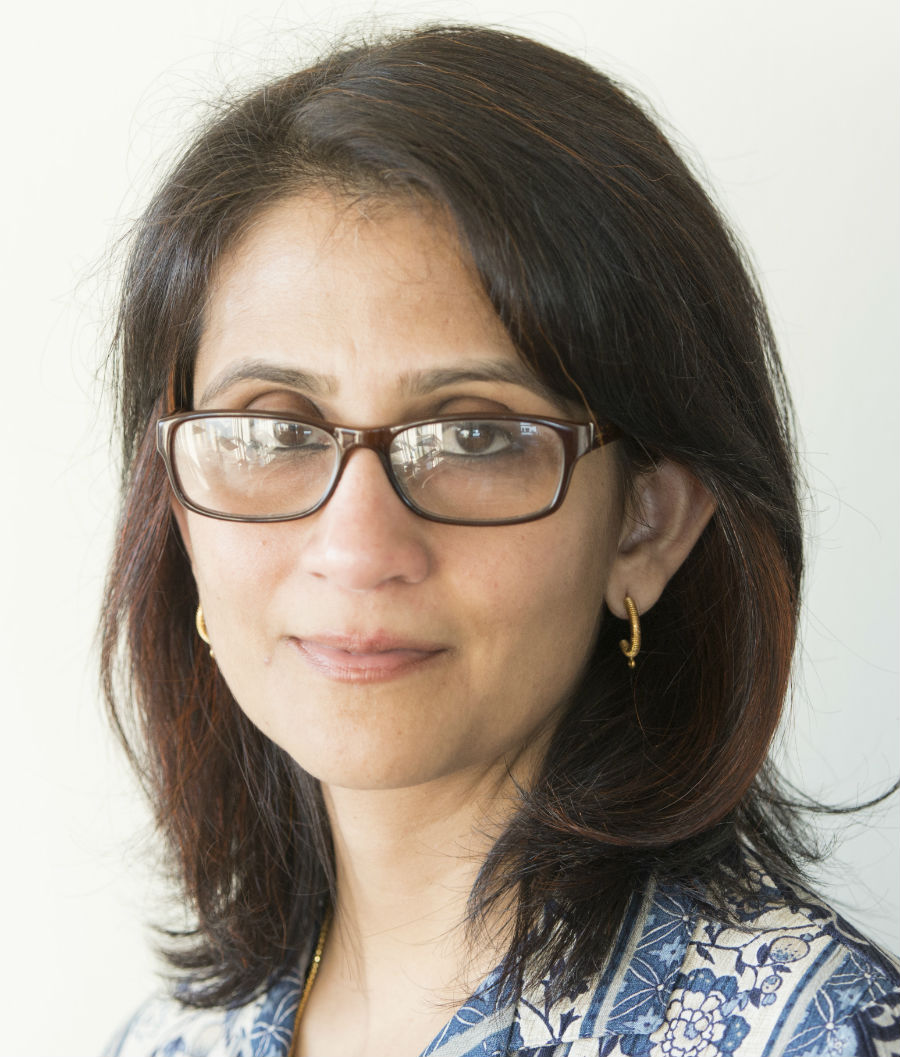 Dr. Monisha Ghosh joined NSF as a Program Director in September 2017, in the Directorate of Computer & Information Science and Engineering (CISE). She manages wireless networking research within the Networking Technologies and Systems (NeTS) program at NSF. Dr. Ghosh is a Research Professor at the University of Chicago, with a joint appointment at the Argonne National Laboratories, where she conducts research on wireless technologies for the IoT, 5G cellular, next generation Wi-Fi systems and machine learning for predictive oncology. Prior to joining the University of Chicago in September 2015, she worked at Interdigital, Philips Research and Bell Laboratories, on various wireless systems such as the HDTV broadcast standard, cable standardization and on cognitive radio for the TV White Spaces. She is a Fellow of the IEEE. She received her Ph.D. in Electrical Engineering from the University of Southern California in 1991, and her B. Tech from the Indian Institute of Technology, Kharagpur (India) in 1986.
Dr. Monisha Ghosh joined NSF as a Program Director in September 2017, in the Directorate of Computer & Information Science and Engineering (CISE). She manages wireless networking research within the Networking Technologies and Systems (NeTS) program at NSF. Dr. Ghosh is a Research Professor at the University of Chicago, with a joint appointment at the Argonne National Laboratories, where she conducts research on wireless technologies for the IoT, 5G cellular, next generation Wi-Fi systems and machine learning for predictive oncology. Prior to joining the University of Chicago in September 2015, she worked at Interdigital, Philips Research and Bell Laboratories, on various wireless systems such as the HDTV broadcast standard, cable standardization and on cognitive radio for the TV White Spaces. She is a Fellow of the IEEE. She received her Ph.D. in Electrical Engineering from the University of Southern California in 1991, and her B. Tech from the Indian Institute of Technology, Kharagpur (India) in 1986.
Winning the DARPA Spectrum Collaboration Challenge
 IEEE Future Networks Webinar:
IEEE Future Networks Webinar:
Winning the DARPA Spectrum Collaboration Challenge
Tuesday, 17 December 2019 | 11:00am EST
Presenters
- John Shea, Prof of Electrical & Computer Engineering, University of Florida
- Tan Wong, Prof of Electrical & Computer Engineering, University of Florida
About the Webinar
The Spectrum Collaboration Challenge (SC2) is a recent DARPA grand challenge that aims to spur the development of next-generation AI-enabled wireless networks, through a series of tournament events, to overcome scarcity in the radio frequency spectrum. Team GatorWings from the University of Florida won the overall top prize of $2 million at the SC2 Championship Event held on October 23, 2019. In this webinar, we share our experiences as well as our radio design strategies leading Team GatorWings to win the SC2 in hopes of shedding some light on further research and development directions in the area of autonomous spectrum sharing. Screen reader support enabled.
About the Presenters
 John M. Shea (S'92-M'99) received the B.S. (with highest honors) in computer engineering from Clemson University in 1993 and the M.S. and Ph.D. degrees in electrical engineering from Clemson University in 1995 and 1998, respectively. Dr. Shea is currently a Professor of electrical and computer engineering at the University of Florida. He is currently engaged in research on wireless communications and networks with emphasis on military communications, dynamic spectrum access, and networked control systems. Dr. Shea was team co-leader for Team GatorWings, which won the DARPA Spectrum Collaboration Challenge (DARPA's fifth grand challenge). He received the Lifetime Achievement Award for Technical Achievement from the IEEE Military Communications Conference (MILCOM) and is the only two-time winner of the Ellersick Award from the IEEE Communications Society for the Best Paper in the Unclassified Program of MILCOM. Dr. Shea was selected as a Finalist for the 2004 Eta Kappa Nu Outstanding Young Electrical Engineer Award. He has been an editor for IEEE Transactions on Wireless Communications, IEEE Wireless Communications magazine, and IEEE Transactions on Vehicular Technology.
John M. Shea (S'92-M'99) received the B.S. (with highest honors) in computer engineering from Clemson University in 1993 and the M.S. and Ph.D. degrees in electrical engineering from Clemson University in 1995 and 1998, respectively. Dr. Shea is currently a Professor of electrical and computer engineering at the University of Florida. He is currently engaged in research on wireless communications and networks with emphasis on military communications, dynamic spectrum access, and networked control systems. Dr. Shea was team co-leader for Team GatorWings, which won the DARPA Spectrum Collaboration Challenge (DARPA's fifth grand challenge). He received the Lifetime Achievement Award for Technical Achievement from the IEEE Military Communications Conference (MILCOM) and is the only two-time winner of the Ellersick Award from the IEEE Communications Society for the Best Paper in the Unclassified Program of MILCOM. Dr. Shea was selected as a Finalist for the 2004 Eta Kappa Nu Outstanding Young Electrical Engineer Award. He has been an editor for IEEE Transactions on Wireless Communications, IEEE Wireless Communications magazine, and IEEE Transactions on Vehicular Technology.
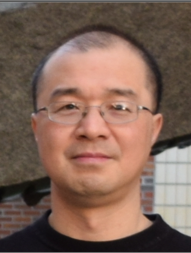 Tan F. Wong received the B.Sc. degree (Hons.) from the Chinese University of Hong Kong in 1991, and the M.S.E.E. and Ph.D. degrees from Purdue University in 1992 and 1997, respectively, all in electrical engineering. He was a Research Engineer with the Department of Electronics, Macquarie University, Sydney, Australia. He also served as a Postdoctoral Research Associate with the School of Electrical and Computer Engineering, Purdue University. Since 1998, he has been with the University of Florida, where he is currently a Professor of Electrical and Computer Engineering. He was the Editor for Wideband and Multiple Access Wireless Systems for the IEEE Transactions on Communications and was the Editor-in-Chief of the IEEE Transactions on Vehicular Technology. He also served as an Associate Editor of the IEEE Signal Processing Letters. Recently, he led Team GatorWings to win the DARPA Spectrum Collaboration Challenge.
Tan F. Wong received the B.Sc. degree (Hons.) from the Chinese University of Hong Kong in 1991, and the M.S.E.E. and Ph.D. degrees from Purdue University in 1992 and 1997, respectively, all in electrical engineering. He was a Research Engineer with the Department of Electronics, Macquarie University, Sydney, Australia. He also served as a Postdoctoral Research Associate with the School of Electrical and Computer Engineering, Purdue University. Since 1998, he has been with the University of Florida, where he is currently a Professor of Electrical and Computer Engineering. He was the Editor for Wideband and Multiple Access Wireless Systems for the IEEE Transactions on Communications and was the Editor-in-Chief of the IEEE Transactions on Vehicular Technology. He also served as an Associate Editor of the IEEE Signal Processing Letters. Recently, he led Team GatorWings to win the DARPA Spectrum Collaboration Challenge.
Access the slides (PDF, 2 MB)
International Network Generations Roadmap Webinar January 2020
 IEEE Future Networks Webinar:
IEEE Future Networks Webinar:
International Network Generations Roadmap, 1st Edition
Tuesday, 14 January 2020 | 11:00am EST
Presenter
Narendra Mangra, Principal, GlobeNet, LLC
About the Webinar
Future network technologies (5G, 6G, etc.) are expected to enable fundamentally new applications that will transform the way humanity lives, works, and engages with its environment. The IEEE Future Networks International Network Generations Roadmap (INGR) is created to stimulate an industry-wide dialogue to address the many facets and challenges of the development and deployment of 5G in a well-coordinated and comprehensive manner, while also looking beyond 5G. The INGR is designed to help guide operators, regulators, manufacturers, researchers, and other interested parties involved in developing these new communication technology ecosystems by laying out a technology roadmap with 3-year, 5-year, and 10-year horizons.
Development of the INGR has produced a technical community that fosters the exchange of ideas, sharing of research, setting of standards, and identification, development, and maturation of system drivers, system specifications, use cases, and supported applications. The focus of this IEEE technology roadmap is to identify key technology needs, challenges, potential solutions, and areas of innovation. This webinar will address the highlights from the First Edition of the INGR that was recently completed in Dec 2019. The INGR working groups include Applications and Services, Artificial Intelligence / Machine Learning (AI/ML), Connecting the Unconnected, Deployment, Edge Automation Platform (EAP), Energy Efficiency, Hardware, Massive MIMO, Millimeter Wave and Signal Processing, Optics, Satellite, Security, Standardization Building Blocks, Systems Optimization, and Testbed. New experts are encouraged to participate as work continues with the Second Edition of the INGR.
Access the INGR at https://futurenetworks.ieee.org/roadmap.
About the Speaker
 Narendra Mangra is the Principal and wireless mobility advisor at GlobeNet, LLC. His experience extends across the wireless mobility ecosystem and mobile network deployment lifecycle within the industry, academia, and government sectors. He is the IEEE Future Networks International Network Generations Roadmap (INGR) Co Chair, IEEE INGR Applications and Services Working Group Co-Chair, and IEEE Future Networks Education Co-Chair. Narendra is also an Adjunct Professor at the George Mason University where he teaches telecommunications project management with a focus on smart cities.
Narendra Mangra is the Principal and wireless mobility advisor at GlobeNet, LLC. His experience extends across the wireless mobility ecosystem and mobile network deployment lifecycle within the industry, academia, and government sectors. He is the IEEE Future Networks International Network Generations Roadmap (INGR) Co Chair, IEEE INGR Applications and Services Working Group Co-Chair, and IEEE Future Networks Education Co-Chair. Narendra is also an Adjunct Professor at the George Mason University where he teaches telecommunications project management with a focus on smart cities.
Narendra has extensive consulting experience in the mobile satellite and cellular communications, public safety communications, information technology, higher education, and federal & local government sectors. His business and technical consulting experience spans strategy development, procurements including solicitation development, spectrum management, RAN network planning and optimization, mobile terrestrial and satellite network deployments, operations & business support systems, international and prepaid roaming, mobility and enterprise communications services modernization and transition planning, live system cutovers, and project management. He has an MBA, MSEE/BSEE and a PMP Certificate. His current interests include the 5G ecosystem and enablers, smart cities and smart regions, and related sustainable interconnected ecosystems.
Webinar March 2020 Cell-Free Architectures with Radio Stripes
 IEEE Future Networks Webinar:
IEEE Future Networks Webinar:
Beyond the Cellular Paradigm: Cell-Free Architectures with Radio Stripes
Tuesday, 10 March 2020 | 11:00am EDT (New York, GMT-04:00)
Presenter
Emil Björnson, Linköping University, Sweden
Emil's Blog: Massive MIMO - News, Commentary, Mythbusting
If your question was not answered during the webinar, please reach out to Emil through his blog.
About the Webinar
The fifth generation of cellular network technology is now a reality and promises higher peak rates and better service quality than previous generations. However, these gains are not achievable everywhere. The cellular architecture is characterized by a sparse deployment of high-power access points, which are surrounded by users being at different distances. Some are close and get good service, and some are far away and get bad service. Despite all the improvements that has been made from 1G to 5G, this fundamental weakness has remained. But there is a potential solution: replacing the conventional cellular architecture with a cell-free architecture, characterized by a dense deployment of low-power access points that jointly serve the users in their vicinity. This webinar will first cover the motivation and background to cell-free networks and then give an overview of recent progress on how to practically implement such networks using Massive MIMO processing, dynamic cooperation clusters, and radio stripes.
About the Speaker
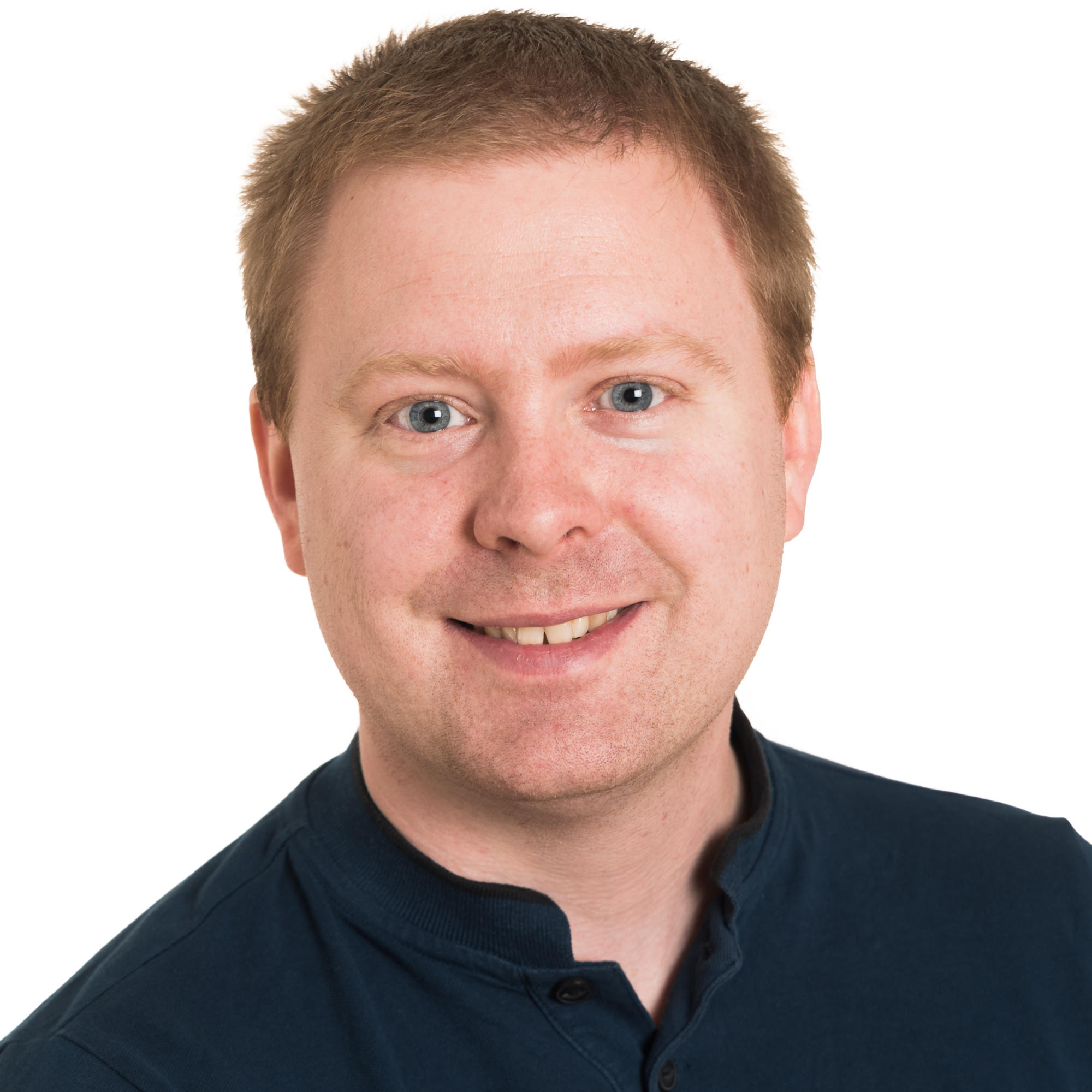 Emil Björnson (S'07-M'12-SM'17) received the M.S. degree in engineering mathematics from Lund University, Sweden, in 2007, and the Ph.D. degree in telecommunications from the KTH Royal Institute of Technology, Sweden, in 2011. From 2012 to 2014, he held a joint post-doctoral position at the Alcatel-Lucent Chair on Flexible Radio, SUPELEC, France, and the KTH Royal Institute of Technology. He joined Linköping University, Sweden, in 2014, where he is currently an Associate Professor and a Docent with the Division of Communication Systems.
Emil Björnson (S'07-M'12-SM'17) received the M.S. degree in engineering mathematics from Lund University, Sweden, in 2007, and the Ph.D. degree in telecommunications from the KTH Royal Institute of Technology, Sweden, in 2011. From 2012 to 2014, he held a joint post-doctoral position at the Alcatel-Lucent Chair on Flexible Radio, SUPELEC, France, and the KTH Royal Institute of Technology. He joined Linköping University, Sweden, in 2014, where he is currently an Associate Professor and a Docent with the Division of Communication Systems.
He has authored the textbooks Optimal Resource Allocation in Coordinated Multi-Cell Systems (2013) and Massive MIMO Networks: Spectral, Energy, and Hardware Efficiency (2017). He is dedicated to reproducible research and has made a large amount of simulation code publicly available. He performs research on MIMO communications, radio resource allocation, machine learning for communications, and energy efficiency. Since 2017, he has been on the Editorial Board of the IEEE Transactions on Communications and the IEEE Transactions on Green Communications and Networking since 2016.
He has performed MIMO research for over ten years and has filed more than twenty MIMO related patent applications. He has received the 2014 Outstanding Young Researcher Award from IEEE ComSoc EMEA, the 2015 Ingvar Carlsson Award, the 2016 Best Ph.D. Award from EURASIP, the 2018 IEEE Marconi Prize Paper Award in Wireless Communications, the 2019 EURASIP Early Career Award, and the 2019 IEEE Communications Society Fred W. Ellersick Prize. He also co-authored papers that received Best Paper Awards at the conferences, including WCSP 2009, the IEEE CAMSAP 2011, the IEEE WCNC 2014, the IEEE ICC 2015, WCSP 2017, and the IEEE SAM 2014.
On-demand recording coming soon
Access the slides (PDF, 3 MB)
Webinar April 2020 Trust Management in Edge Clouds with SCONE
 IEEE Future Networks Webinar:
IEEE Future Networks Webinar:
Trust Management in Edge Clouds with SCONE
Wednesday, 22 April 2020 | 11:00am ET
Presenter
Christof Fetzer, TU Dresden, Professor, and Scontain, SIListra, and Cloud&Heat, Co-founder
About the Webinar
About the Speaker
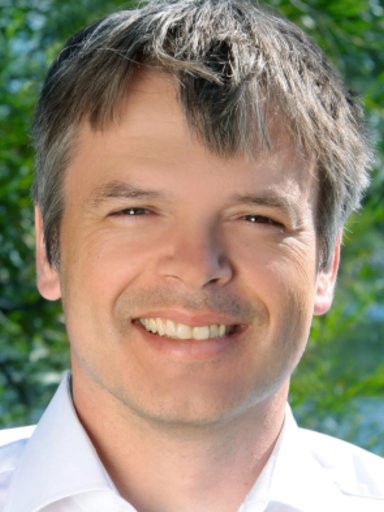 Prof. Christof Fetzer's research focuses on Trusted Execution and Dependable Computing. He is a co-Founder of Cloud&Heat GmbH, SIListra Systems GmbH, and Scontain UG. He has been a Professor at TU Dresden, Germany since 2004 and he received his PhD from the University of California, San Diego.
Prof. Christof Fetzer's research focuses on Trusted Execution and Dependable Computing. He is a co-Founder of Cloud&Heat GmbH, SIListra Systems GmbH, and Scontain UG. He has been a Professor at TU Dresden, Germany since 2004 and he received his PhD from the University of California, San Diego.
On-demand recording (coming soon)
Webinar May 2020 Evolution of Optical and Transport Technologies for 5G Crosshaul Networks
 IEEE Future Networks Webinar:
IEEE Future Networks Webinar:
Evolution of Optical and Transport Technologies for 5G Crosshaul Networks
Tuesday 19 May 2020 | 11:00am ET
Presenter
Reza Vaez-Ghaemi, Ph. D., Viavi Solutions
About the Webinar
About the Speaker
 Reza Vaez-Ghaemi, Ph. D.
Reza Vaez-Ghaemi, Ph. D.
Reza has held positions in research, engineering, marketing, and management in telecommunications industry in Germany and the United States. Reza is employed by Viavi Solutions as a senior Manager for Product Line Management responsible for research in emerging technologies and development of product roadmaps for Carrier Ethernet, Mobile Backhaul, Fronthaul and Optical Transport networks. He received his BS, MS, and PhD in Electronics and Electrical Engineering from Technical University of Berlin (Germany).
On-demand recording coming soon
Presentation slides (PDF)
Webinar June 2020 Realizing 5G Futures and Enablers Using ENCQOR 5G Testbed
 IEEE Future Networks Webinar:
IEEE Future Networks Webinar:
Realizing 5G Futures and Enablers Using ENCQOR 5G Testbed
Tuesday 23 June 2020 | 11:00am EDT
Presenter
Benoit Pelletier, Co-founder, ENCQOR, Ciena, Canada
About the Webinar
In this talk, we will provide an update on the ENCQOR 5G initiative led by industry, which is a transformational Canada-Quebec-Ontario partnership for research, innovation and adoption of disruptive 5G technologies targeting Canadian’s first pre-commercial 5G testbed. We will highlight the 5G cross-provincial testbed technologies & capabilities and provide few Use Cases that the ecosystem can demonstrate in this testbed as well as sharing the breakdown of hundreds SME projects per vertical.
In order to construct the infrastructure necessary to support rapid development, the underlying platform must allow ENCQOR 5G partners and users to stitch systems that continuously adapt to rapidly changing environments. As one of founding members, Ciena is leading the development of a Self-Optimizing Fabric through an International Research Ecosystem that will allow ENCQOR partners and users to create such adaptive systems in the smart corridor.
About the Speaker
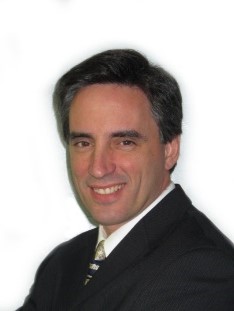
Benoit Pelletier
Co-founder of the ENCQOR 5G project and executive member of Innovation ENCQOR; a NPO created to deliver this collaborative innovation project across Quebec-Ontario corridor, Benoit Pelletier is currently director, Business Development and Head of ENCQOR 5G Program at Ciena Canada. He is involved in developing new business opportunities, partnerships and/or alliances as well as fostering innovation through collaborative ecosystems and synergy with Universities and Small & Medium Enterprises.
Passionate about innovation, “Innovate or Evaporate” has been its mantra over the last 30 years in different industry markets: Telecom at Ciena and Nortel, Transport at Bombardier and Aerospace at Oerlikon Aerospace. Benoit held a number of positions within design, system integration, program management and business development. Broad knowledge in Product Development, Cost Management and expertise in New Product Introduction of cutting-edge technologies and government relationships. Benoit holds a Bachelor of Electrical Engineering degree from Sherbrooke University
On-demand recording coming soon
Click here for the presentation slides
Winter School for Young Professionals 2019
30 Mar 2019 | Silver Spring, Maryland
Agenda
| Time | Title | Speaker | Download Presentation |
| 10:00 | Introductions | ||
| 10:10 | Broadband Communications Industry and Path to 5G | Mr. Narendra Mangra | |
| 11:00 | Spectrum and Its Application to 5G and the Power of Massive MIMO | Mr. Tajit Mehta | |
| 11:55 | Complimentary Lunch | ||
| 12:45 | Emerging 5G Transport Networks | Dr. Reza Vaez-Ghaemi | |
| 1:35 | Panel Discussion | ||
| 1:55 | Closing Remarks |
Speakers:
Narendra Mangra is a multi-disciplinary telecommunications advisor, consultant and educator at GlobeNet. He has over 20 years of experience working in the mobile satellite and terrestrial telecommunications, public safety, information technology, government, and higher education sectors. Narendra has held leadership roles that span the mobile wireless ecosystem and system deployment lifecycle including strategy development, wireless engineering, large scale system deployments coordination, business / operational support systems (BSS/OSS), and wireless education. Narendra also works with the Redhorse Corporation in assisting large agencies with mobility and enterprise communications services modernization. He is also an Adjunct Professor at the George Mason University where he teaches telecommunications project management with a focus on smart cities. Narendra is the IEEE Future Network Applications and Services Co-Chair. His areas of interest include smart cities and related ecosystems.
Abstract: Broadband Communications Industry and Path to 5G
Wireless communications is evolving rapidly to provide mobility access for faster and ubiquitous communications. It can transform and create innovative applications such as connected health, mobile financial services, connected vehicles, public safety applications, smart grid, etc for a converged Smart City deployment. 5G technology is expected to drive this communications transformation and extend our mobility access across the globe. This session will focus on the converging fixed and mobile broadband communications industry including industry structure, market drivers, urban/rural communications infrastructure deployments, and spectrum positions. 5G enhancements for selected adjacent industries will also be discussed.
Tajit Mehta has worked for several International Telecommunications Carriers over the last 24 years. He has worked in Spectrum Development, International Cable functionality, Value Added Enhanced dialing products, and Automated Multilingual services, to Spectrum Acquisition for Wireless mobility. Mr. Mehta Co-chaired the Global Development Committee (GDC) of the Wireless Communications Association International (WCAI), and currently negotiates Spectrum rights for Sprint. Mr. Mehta holds an Master of Arts International Studies from University of Washington, Seattle and a Bachelor of Arts in Political Science from University of California, San Diego.
Abstract: Spectrum use and its application to 5G.
What is spectrum, why does it matter, and how does it apply to generational technology growth, in particular 5G development. What are the 3Ps when it comes to spectrum and how do these distinctions matter? Why does the licensing of Spectrum matter to innovation? This talk will touch on these broad questions and hopefully bring some understanding of spectrum use. There will be time for Q &A.
Dr Reza Vaez-Ghaemi, Viavi Solutions
Reza has worked in the test and measurement business for more than 25 years. He has held roles in R&D, marketing, and management in Germany and the United States. Reza currently serves as a senior manager of product line management for Viavi Solutions. He holds BS/MS and Ph.D. degrees in electrical engineering from the Technical University of Berlin, Germany.
Abstract: Emerging 5G Transport Networks
Emerging 5G services pose new requirements for the transport networks. Drastic rise in bandwidth and ultra-low latency constitute two important aspects of these requirements. Addressing them necessitates a new split of functions in radio access networks. CPRI/eCPRI, IEEE, and xran/ORAN are among the organizations that have come up with new standards to design and characterize the new functional splits and xhaul network architectures. This presentation will start by listing the new requirements and challenges of current transport technologies, and focuses on describing the split options and related service level agreements. The highlights include eCPRI, xran/ORAN, IEEE 802.1cm, IEEE 1914.1, network slicing and 5G synchronization technologies.
Summer School for Young Professionals 2018
30 Mar 2019 | Silver Spring, Maryland
Agenda
| Time | Title | Speaker | Download Presentation |
| 8:30 | Registration, Coffee, Continental Breakfast | ||
| 8:45 | Introductions and Overview | ||
| 9:00 | Mobile Ecosystem Overview | Narendra Mangra, GlobeNet | |
| 10:00 | Deepak Chaudhary, Nokia | ||
| 11:00 | Break | ||
| 11:15 | Transport 5G Considerations | Rexa Vaez-Ghaemi, Viavi Solutions | |
| 12:30 | Lunch | ||
| 1:00 | Core Network | Rahul Pal, T-Mobile USA | |
| 2:00 | Smart Cities Overview | Narendra Mangra, GlobeNet | |
| 3:00 | Wrap-up |
Abstracts and Speakers:
Abstract: Mobile Ecosystem Overview
Wireless communications is evolving rapidly to provide mobility access for faster and ubiquitous communications. It can transform and create innovative applications such as connected health, mobile financial services, connected vehicles, public safety applications, smart grid, etc for a converged Smart City deployment. 5G technology is expected to drive this communications transformation and extend our mobility access across the globe. This session will focus on the converging fixed and mobile broadband communications industry including industry structure, market drivers, urban/rural communications infrastructure deployments, and spectrum positions. 5G enhancements for selected adjacent industries will also be discussed.
Abstract: 5G Interconnected Ecosystems for the Development of Smart Cities
The significant growth in the global urban population is expected to drive economic development, quality of life, technology development, resource conservation, and sustainability initiatives. The urban population growth may also strain current capabilities as cities adjust to meet growing demands. Cities will need to evolve to attract and retain residents, businesses, and visitors. Ecosystems will need to adapt and become smarter to drive cross-industry improvements in transportation, energy and utilities, healthcare, public safety, tourism, etc.
Smart Cities is based on a connected ecosystem of ecosystems where the underlying communications infrastructure is critical. The combined satellite, 5G, and wireless local area network (WLAN) communications will help create new applications and provide greater operational efficiencies for existing applications. Ecosystems will evolve to drive cross-industry applications such as Connected Vehicles, Smart Grids, Connected Healthcare, and Connected Workforce, etc. This presentation will highlight strategy development, governance and structure, 5G use case categories and technical drivers, and roadmap development considerations for Smart Cities.
Narendra Mangra is a multi-disciplinary telecommunications advisor, consultant and educator at GlobeNet. He has over 20 years of experience working in the mobile satellite and terrestrial telecommunications, public safety, information technology, government, and higher education sectors. Narendra has held leadership roles that span the mobile wireless ecosystem and system deployment lifecycle including strategy development, wireless engineering, large scale system deployments coordination, business / operational support systems (BSS/OSS), and wireless education.
Narendra also works with the Redhorse Corporation in assisting large agencies with mobility and enterprise communications services modernization. He is also an Adjunct Professor at the George Mason University where he teaches telecommunications project management with a focus on smart cities. Narendra is the IEEE Future Network Applications and Services Co-Chair. His areas of interest include smart cities and related ecosystems.
Ambitious targets have been set for 5G, with data rates up to 20 Gbps and capacity increased by 1,000 times. The technology also needs to provide a flexible platform for new services such as massive Internet of Things (IoT) and critical machine communication with low latency and ultra-high reliability. The current generation of mobile communication networks (e.g., 3G, 4G, LTE) cannot meet the stringent demands of IoT for high data rate, high reliability, high coverage, low latency, and low energy footprint, which hampers the development and implementation of use cases in Smart ecosystem. As a future advanced wireless transmission technology, 5G has a significant potential to provide some solutions. The new technologies needed to achieve all these targets include new spectrum, new antenna technologies known as massive Multiple Input Multiple Output (MIMO), network slicing and new network architecture In this talk we will look at fundamentals of Radio Access Network and evolution into 5G. We may also attempt to discuss New Radio (NR) as well as Massive MIMO system.
Deepak Chaudhary is Regional Delivery Director in Nokia Mobile Network group. He has almost 20 years of experience in telecom industries. Deepak has held leadership roles that span the mobile wireless ecosystem and network deployment plus performance and process improvement. His experience includes strategy large and small-scale network deployment, wireless engineering, business / operational support systems (BSS/OSS), and program management.
Deepak is also leading Innovation lead in IoT services within Nokia focusing to build new services and new clients for Nokia MN using wireless experience and merge with Data Analytics to create new revenues. He is an active member of PMI institute. At present holding AVP Event Services position with PMIWDC Chapter.
Abstract: 5G Transport Network Considerations
Continuous evolution of wireless networks promises to enhance user experience and introduce completely new applications and revenue streams for operators. The network evolution involves multiple changes that enable support of applications with a diverse set of bandwidth and latency requirements. The diversity ultimately fuels the concept of network slicing: a network of networks that can support multiple types of service-level agreements (SLAs) on the same infrastructure and that is software defined and, where applicable, virtualized.
Planning and deploying this highly programmable and scalable network requires thorough analysis of performance requirements and understanding of SLAs among the participants of the ecosystem which can include wireless providers, transport/network operators, and increasingly, network function virtualization (NFV) infrastructure providers. This presentation starts by reviewing the overall system requirements as a result of emerging 5G services. It continues by analyzing the network requirements in the backhaul and fronthaul part of radio access networks, and closes by presenting SLA’s for various types of 5G services and network segments. The presentation includes a review of emerging standards for fronthaul and timing/synchronization including IEEE 802.1cm, IEEE 1914.1/3, eCPRI, xran, and IEEE G.8276x/G.827x.
Dr Reza Vaez-Ghaemi, Viavi Solutions
Reza has held positions in research, engineering, marketing, and management in telecommunications industry in Germany and the United States. Reza is employed by Viavi Solutions as a senior Manager for Product Line Management responsible for research in emerging technologies and development of product roadmaps for Carrier Ethernet, Mobile Backhaul, Fronthaul and Optical Transport networks. He received his BS, MS, and PhD in Electronics and Electrical Engineering from Technical University of Berlin (Germany).
Core Network has played a critical role in evolution of Telecommunications networks worldwide. With bit rates ranging from few Kbps to Gbps observed today would not have been possible without the evolution of core network. In Addition, Core network provides various functions in a wireless network ranging from NW registration, Supporting Mobility, Generation of billing records and supporting new use cases for operators to augment revenue generation.
The presentation starts with covering the evolution of Core network followed by discussing the different functions provided by Core Network. The presentation would then transition to focus on 5G drivers and technology enablers followed by evolution of 5GCN aka 5G Core Network. We will discuss new features like Control and User plane separation, Network Slicing and NFV/SDN and the role of each feature in defining how next gen 5G core network will function.
Rahul Pal is a seasoned telecom professional with 10+ years of experience working on Core networks. Rahul has experience in working across multiple technologies (2G,3G & 4G) and specializes in Design & Deployment of large scale wireless networks. Rahul is currently employed at T-Mobile USA in the Network Engineering group primarily focusing around Architecture & Design of Packet Core Network nodes.


